

Remembrance Day
Wellington North solider Lieutenant Samuel Lewis Honey
ELLOUISE THOMPSON REPORTER
CONN – Samuel Lewis
Honey was born Feb. 9, 1894, in Conn, to parents Reverand George Edward Honey and Metta Blaisdell.
Honey was the eldest of the couple’s seven children.
Honey’s father served in several methodist churches in and around Conn. Much like other clergymen’s families, Honey and his siblings moved at frequent intervals throughout their childhood.
In his early life, Honey, despite being a diligent student, found time to indulge in hobbies such as sports, photography and music.
Honey attended school in Drayton until 1908 when his father was transferred to Princeton, Oxford County.
Honey then attended the Princeton Continuation School, which he graduated from in 1910.
After graduation, Honey set his sights on education, teaching at the Six Nations Reserve near Brantford and a school near Drumbo where the previ-
ous teacher had fled due to stubborn and unruly students.
However, Honey accepted the challenge and on account of his success was allowed to enter teachers’ college at a young age.
Honey enrolled at the Normal School in London in autumn of 1911 and graduated the following June with a public school teaching certificate.
The young teacher then went on to teach at the Londesborough school in Western Huron County, before resigning to take his senior matriculation (a certificate awarded to a high school graduate in Canada for successfully completing at a high school a year of additional studies of college grade) at the Walkerton High school.
He then went on to complete a course as a cadet instructor before returning to teaching in Whitchurch Township in York County.
He then planned to enroll at Victoria College in Toronto to receive his arts degree.
However this was brought to an end by his enlistment in 1915 in Walkerton with the 34th
Infantry Battalion.
The now young solider left for Devonport England on Oct. 31, 1915, where as an acting sergeant, he was chosen to partake in special courses in physical training and bayonet (a steel blade attached to the muzzle of a rifle used for handto-hand combat) fighting.
In August 1915, Honey was officially ranked as a sergeant by the 78th Infantry Battalion, part of the 4th division, and embarked on his journey to France on Aug. 12.
On Feb. 22, 1917, Honey was awarded the military medal for gallantry during a raid on German trenches.
Part of Honey’s award citation read, “He did most excellent work in clearing an enemy’s communication trench and establishing a block in spite of heavy opposition. He personally covered the withdrawal of his own and another squad under a very heavy grenade fire.”
Despite this, Honey remained humble and wrote to his family, “I think the rest of the party deserved recognition as much as I did … what I did,
THANK YOU VETERANS THANK YOU VETERANS

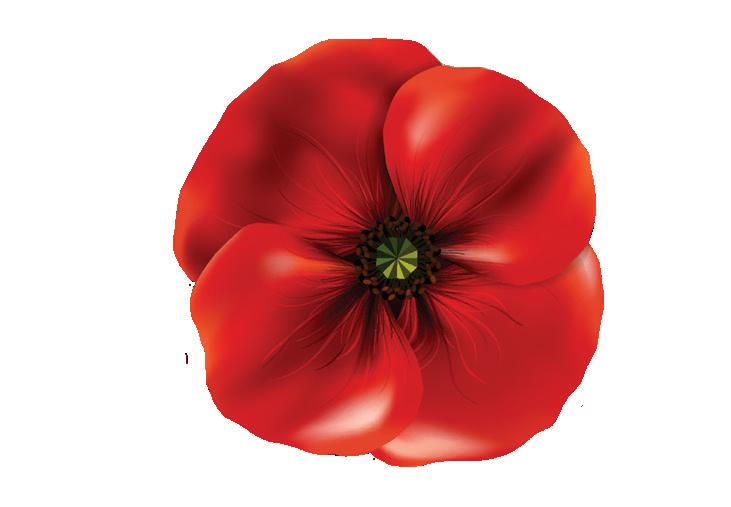
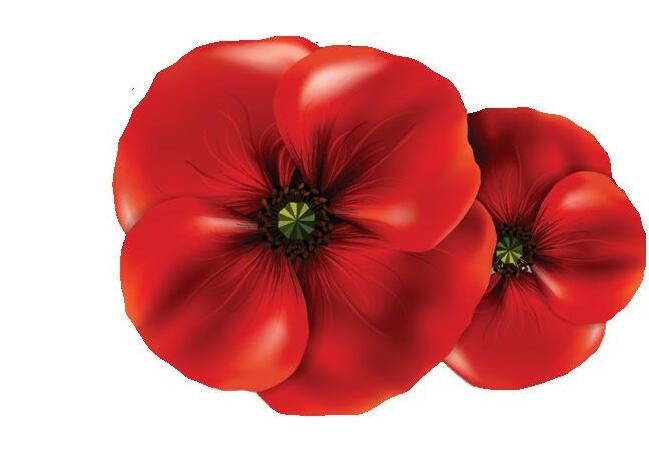


didn’t amount to much.”
The young solider was then awarded the Distinguished Conduct Medal for gallant leadership during the battle of Vimy Ridge in April, after his platoon commander had been wounded.
Honey assumed command, leading his party forward despite enemy fire, until he was compelled by casualties to dig in. Honey held his position for three days, setting an encour aging example for the rest of his party.
After Vimy Ridge Honey was recommended for a commis sion.
In early May he became an instructor at Bramshott pend ing the opening in July of the officers’ training course at Bexhill.
Honey rejoined his unit as a lieutenant on Oct. 14, 1917.
In August of 1918 the Canadian Corps was given the task of dislodging the enemy from a maze of defensive positions considered to be almost impenetrable. Through a series of determined attacks, the Canadians pierced the first

SEE LIEUTENANT » 8
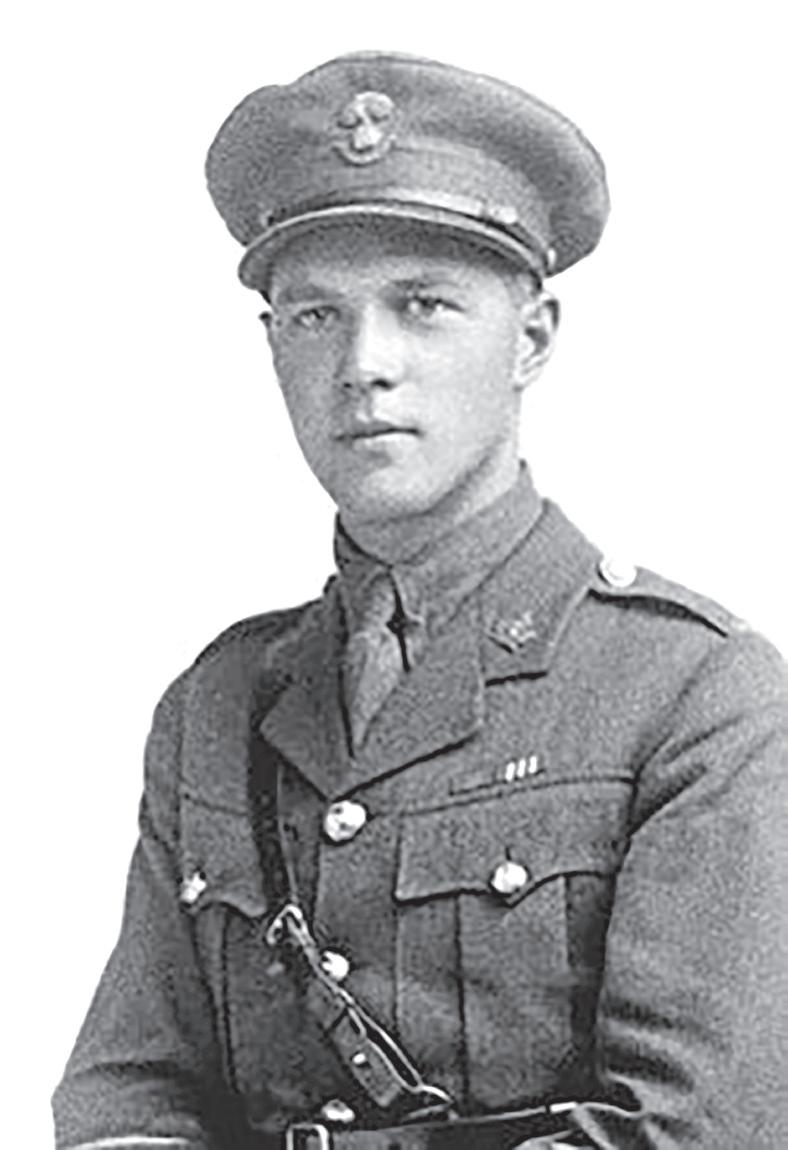


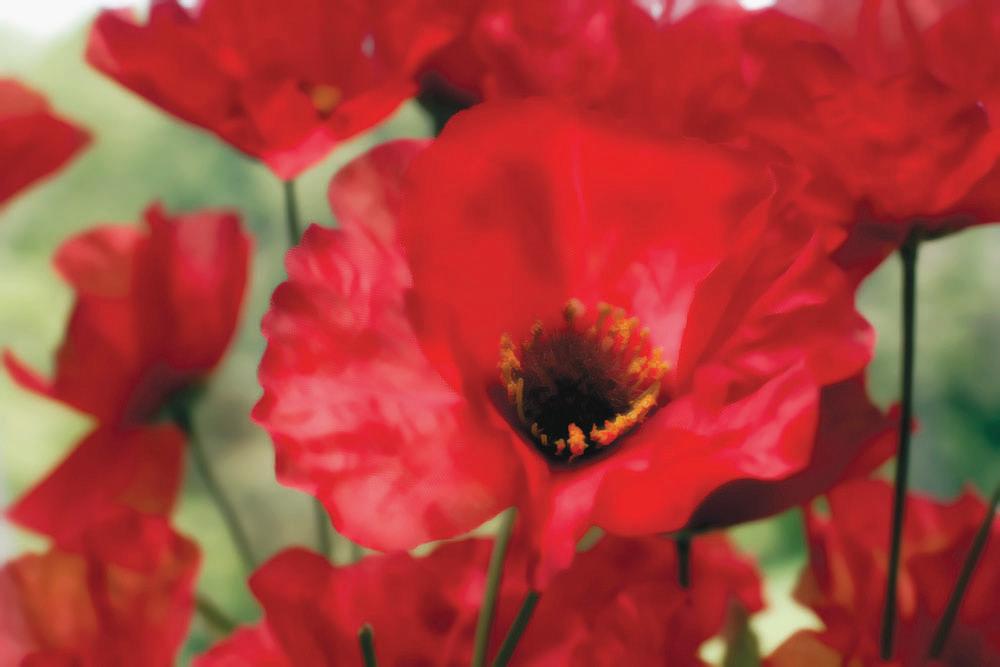
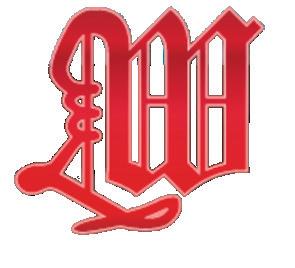
Tim Wylie & Sara Buckley
tim@wylieinsurance.ca sara@wylieinsurance.ca
Harriston Gorrie
Box 434, N0G 1Z0
Tel: 519-338-3847
Fax: 519-338-3802


Palmerston Poppy Project doubles in size
Box 69, N0G 1X0
Tel: 519-335-3193
Fax: 519-335-6012
Toll Free: 1-800-469-8122
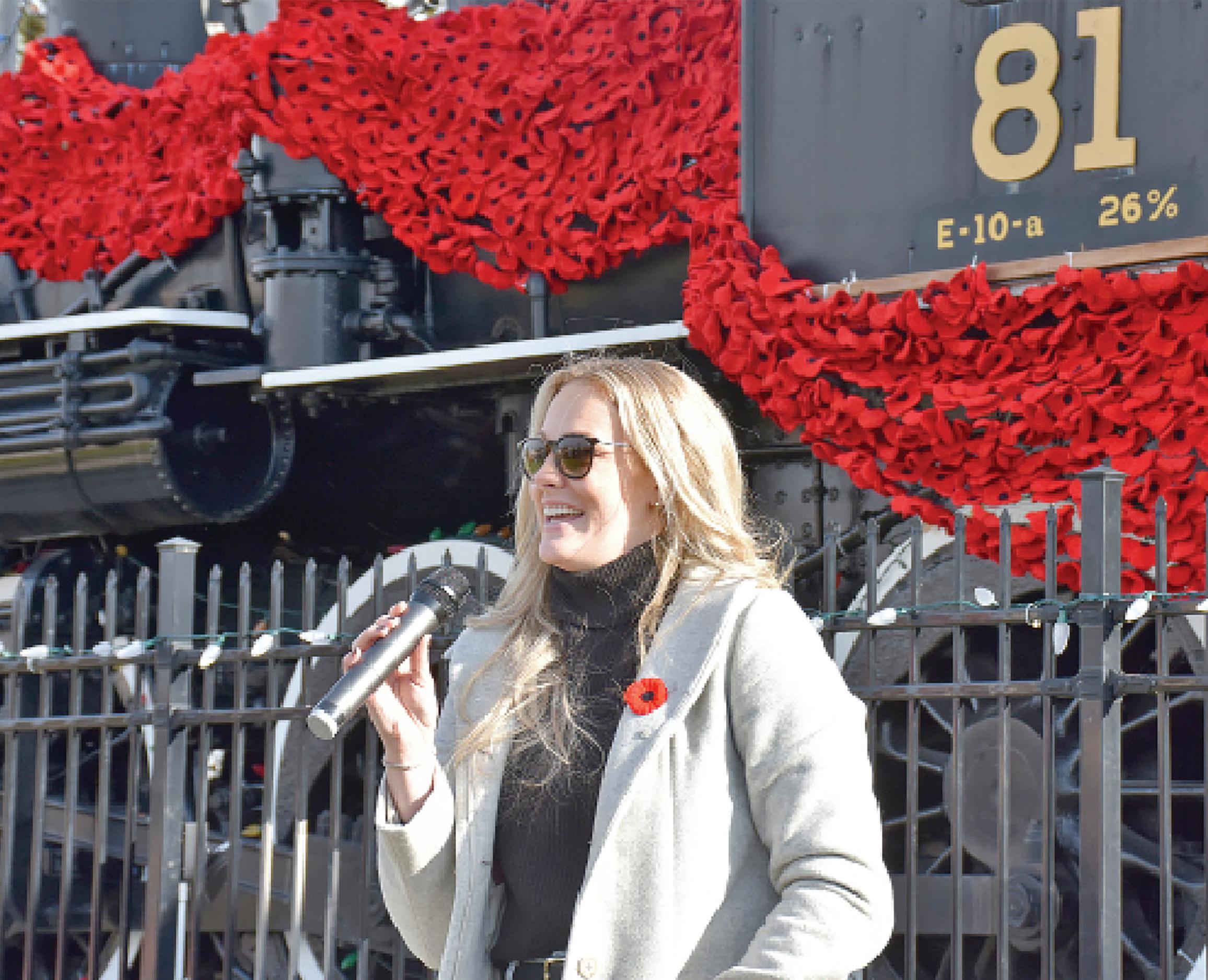
PALMERSTON – What began as a small way to honour war veterans quickly turned into a community-wide project.
Chair of the All Aboard Palmerston beautification committee Taylor Keunen began the Poppy Project last year after wanting a way to “uniquely honour the veterans in the community.”
Calling all crocheters
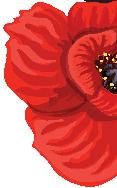


To make her idea come to life she posted on social media calling out to any crocheters in the community who were willing to crochet some poppies for a big art installation.
“It blew up so insanely quickly … within less than two months we had about 1,500 poppies done and we able to cover half of Old 81 downtown Palmerston,” Keunen told the Community News
The installation is a large durable net which gets covered in hundreds of poppies to then be attached to the Palmerston Old 81 Steam Engine in the downtown core.
As Keunen is a part of the beautification committee her main goal is to enhance Palmerston in new and creative ways. Not only do the poppies stand out but they hold an “impactful” meaning.
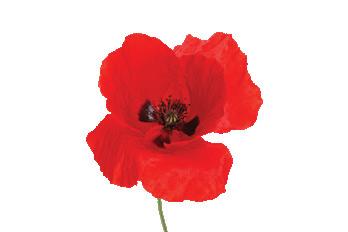

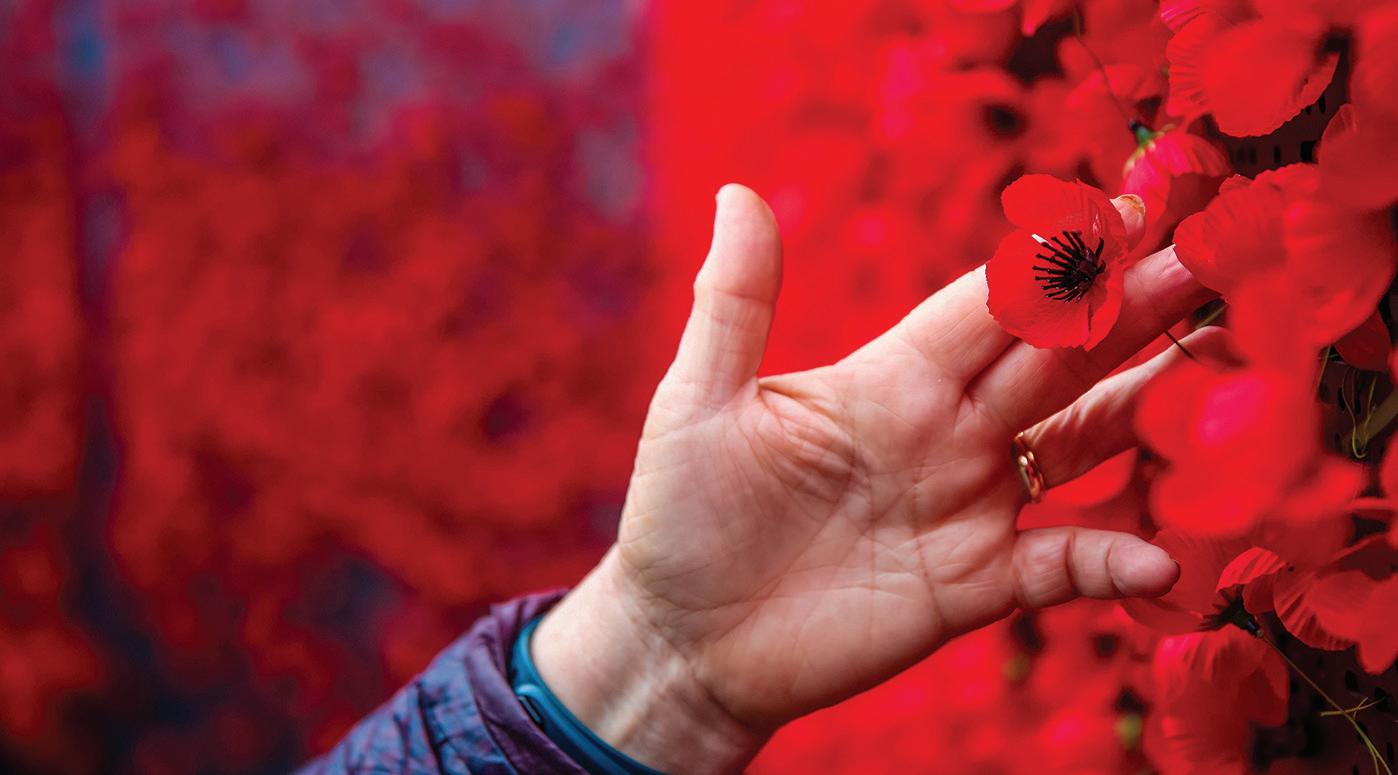
“Everyone was so keen that we bought another few hundred balls of yarn and everyone picked it up … they’ve been crocheting like crazy over the last year,” she added.
The response from the crocheters and the community was “outstanding” and “a real testament to the community and the people who live in it.”
Even Keunen’s toddlers got in on the project by picking up the dropped off poppies on their
Anna Marie Toner and Liette Will for crocheting and tying hundreds of poppies onto the net this year.
“I was hoping this could maybe be a reality in like a few years but this has exceeded my expectations and hopes of the project within about a year,” she said.
Her goal was to double the amount of poppies from last year so the blanket of poppies could cover the whole train add-
“It’s been a really beautiful process leading up to the end result.”
doorstep all year round.
Some of the poppies were created by a group of 15 volunteers with the final total being around 3,500 crocheted poppies.
As the project was open to all who wanted to join Keunen received poppies made from volunteers in the greater communities of Palmerston.
“We had people reach out from Perth County, Wellington County [and] Huron County and kind of all over,” she said.
Keunen expressed her thanks to volunteers Mary-Beth Wilson,
ing to the impact of the piece.
“I really wanted to do something special that could make an impact visually and for the community to honour our veterans especially the ones specifically from Palmerston and Wellington County,” she told the Community News
As Remembrance Day nears the poppy blanket will be on display from Nov. 2 to 15.
“This was a very communityminded and collaborative project and it’s just been incredible having so many different people
All Aboard Palmerston’s beautification committee chair, Taylor Keunen began the Poppy Project last year and held the official unveiling on Nov. 3, 2023 at the Old 81 Train in Palmerston. The poppy display has now doubled in size.
Community News file photo
express interest and eagerness to be involved,” she added.
“It’s been a really beautiful process leading up to the end result.”
A helping hand
Keunen expressed her gratitude towards the staff and individuals at the Building Bridges Adult Day Program in town as they spent a week tying hundreds of poppies onto the display.
Building Bridges is an inclusive program for adults diagnosed with a developmental disability. Sierra Moreira, owner of the program, stated their group tied about 450 poppies.
“We had a whole box filled with poppies … every single day we got an opportunity to tie poppies so each individual got to contribute,” Moreira told the Community News
She explained the importance of educating the adults in the program about the war veterans and the significance behind celebrating the eleventh.
“Remembrance Day is extremely important to remember the veterans; there’s a lot of individuals in the town of Minto and in the community of Palmerston that have sacrificed their livelihoods to support and fight for our country,” she added.
As for next year’s project nothing is set in stone as right now Keunen has have hit her goal and would like to enjoy it.
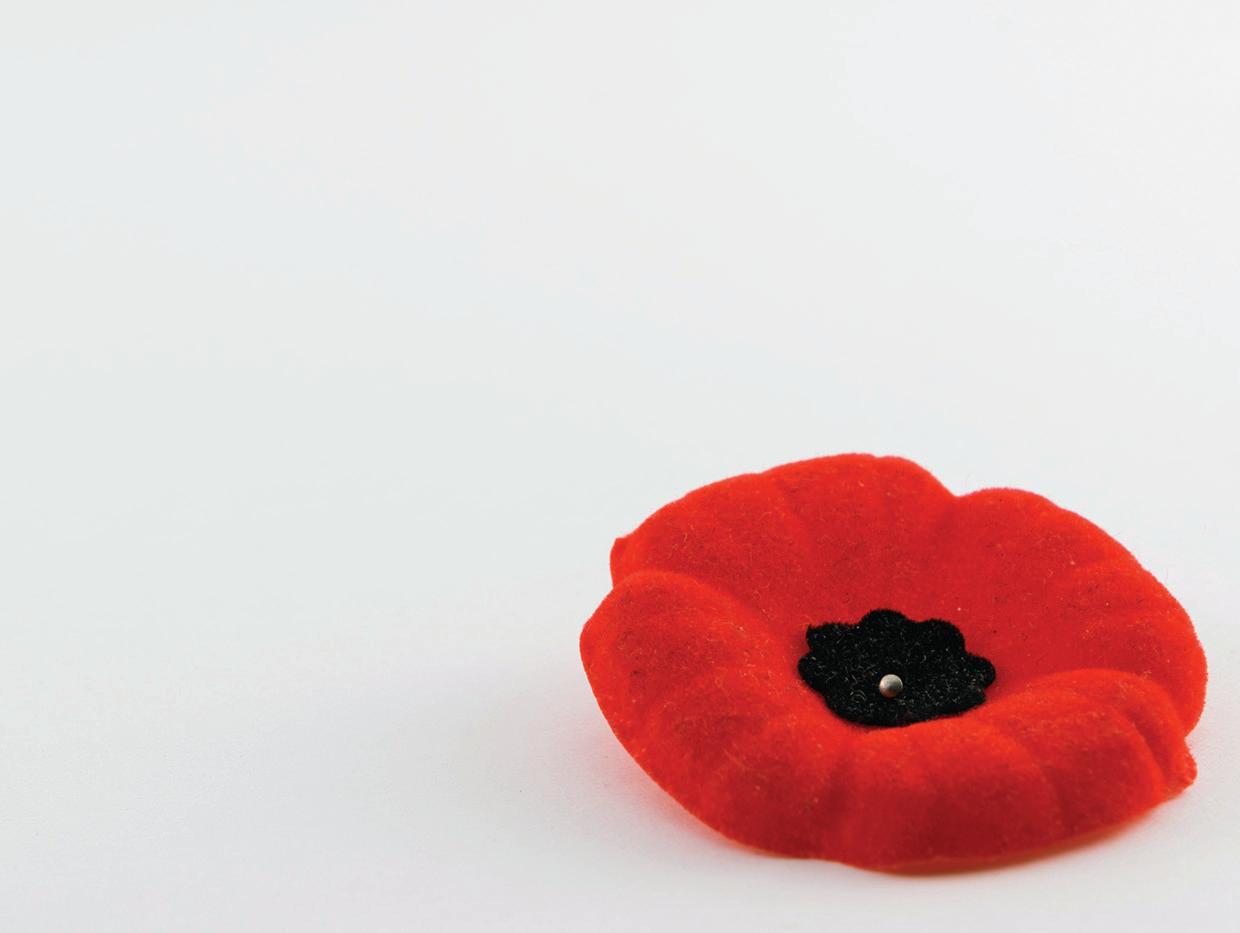

Women Memorial Workers, mourning mothers behind Arthur cenotaph
ROBIN GEORGE REPORTER
ARTHUR – The Arthur Cenotaph has stood at the corner of George and Frederick streets in Arthur since 1923, thanks to the hard work of a group of locals known as the Women Memorial Workers.
The group formed in 1919, after Arthur Enterprise News editor Rixon Rafter proposed the idea for a memorial to honour fallen soldiers.
According to Arthur and Area Historical Society officials, the Women Memorial Workers suggested the park at George Street and Frederick Street West “despite those who thought the former site of livery stables was inappropriate.”
The council of the day approved the location and purchased the land for $500.
Stones were collected from local farm fields to build the Cenotaph, making it the first fieldstone Cenotaph in Ontario, according to the historical society.
The architect was Arthurraised Major J.M. Gibson, who commanded some local soldiers oversees, and the contractor was local stonemason Ed Doherty, officials state.
The Cenotaph was unveiled by Women Memorial Workers president Mary Brocklebank and Margaret Chambers after a three hour ceremony on Aug. 6, 1923, according to an account by Robert Shipley and Derek Pullen posted on the Veteran Affairs Canada website.
Brocklebank and Chambers both lost their sons, Stanley Brocklebank and Robert Chambers, during the First World War.
In 2010, a plaque was installed in the walkway in front of the Cenotaph, recognizing the Women Memorial Workers’ contributions.
The plaque was funded by the Arthur and Area Historical Society and the Arthur Revitalization Committee.
According to the plaque, the Women Memorial Workers’
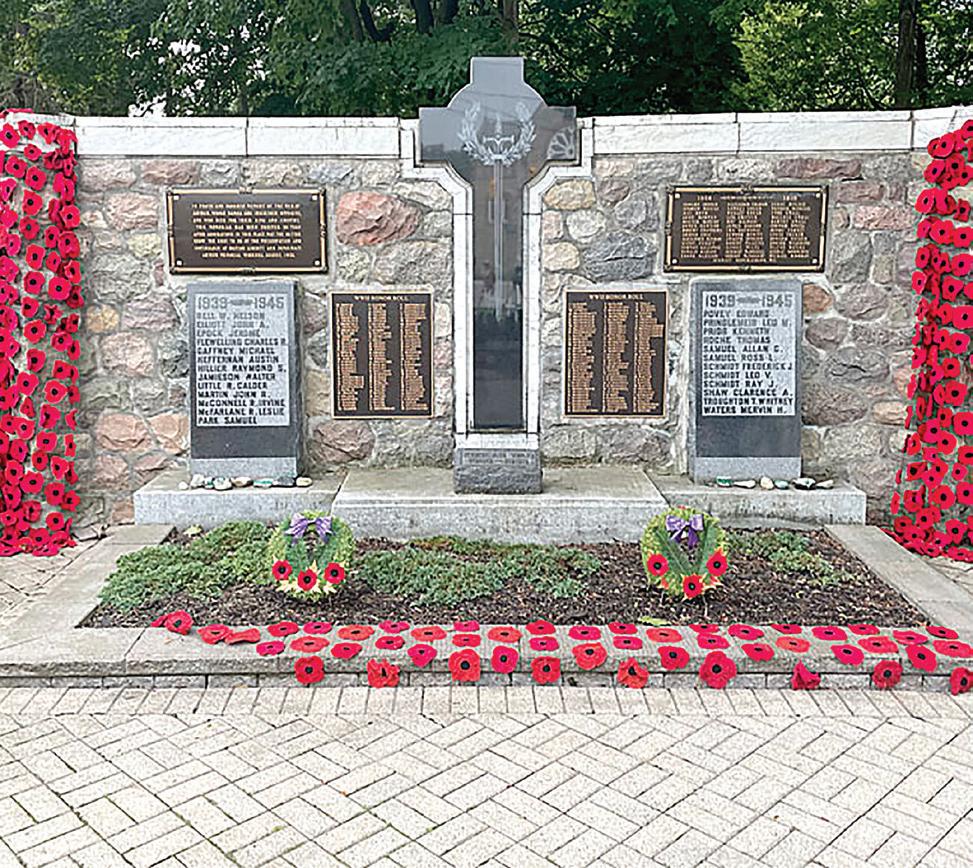
objective was to “honour those men from the area who had enlisted and especially those who had paid the supreme sacrifice.
“After 1923, the women continued their work landscaping the surrounding grounds and, in 1939, turned the park and Cenotaph monument over the village with a consider-
The Women Memorial Workers formed in 1919 with the objective of honouring men who enlisted, and particularly those who died, in the First World War.
Advertiser file photo
able financial contribution for upkeep,” the inscription on the stone states.
Memories of the Second World War
DRAYTON – Because I was born in the fall of 1939, I have some memories of living in Northeast London in the UK during the end of the second World War.
Even now, eighty years later, sometimes the sound of an emergency vehicle siren brings back the memory of my family rushing to get into the shelter to await the all clear signal.
There would be times when we would hear a bomb fall, but most times as we waited, there was nothing; only an eerie silence.
At night we slept in the shelter, which, in our case, was a large steel structure inside the house. For me this was normal as I had never slept in anything else, but for my parents it must have seemed like a cage.
Later, during the war years, things changed as daytime rockets were replacing nighttime bombers.
Initially, we were threatened by the V1 rocket , which you could hear coming as it had a noisy staccato engine. It was common knowledge that if you heard the engine stop, you were safe. This was because when

the engine stopped, the rocket glided down to earth some distance away.
However, it would hit the ground and explode with no warning for the people close by.
Later, the V2 came on the scene. There was no warning of this missile, powered by a liquid-propellant rocket engine, making it extremely dangerous.
I was enrolled in Infant School in September 1944.
My teacher was Miss Cheesewright, who I instantly fell in love with.
From time to time we would hear a warning air raid siren and immediately, whatever the class was doing, we had to sit under our desks until the all clear siren was heard. For us young boys, this was great fun and an opportunity to play games.
Another wartime event occured while I was out shopping with my mother.
I probably didn’t want to go, but mothers rule. Mom wanted to go into Woolworths for something but didn’t want me in the store where I could be a nuisance with so much interesting stuff on display.
So I stood outside and waited. As I stood there, a huge

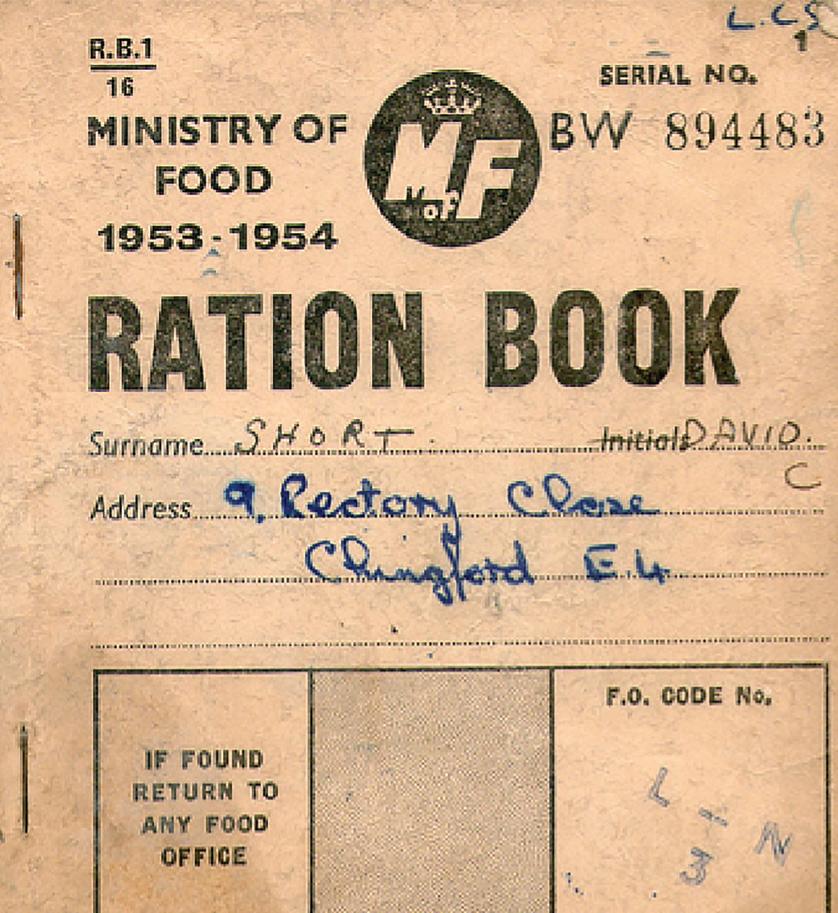
Ration book – For those vintage Canadians of British origin, I attach a reminder of the hard days that followed the war. It is my ration book from 1954. Yes, food was in short supply and rationed. Submitted photo
explosion shook the ground and the whole area. A V1 rocket had landed and exploded nearby.
Not ten feet away from me, the plate glass window of Williams Brothers Grocery Store fell out and smashed on the pavement.
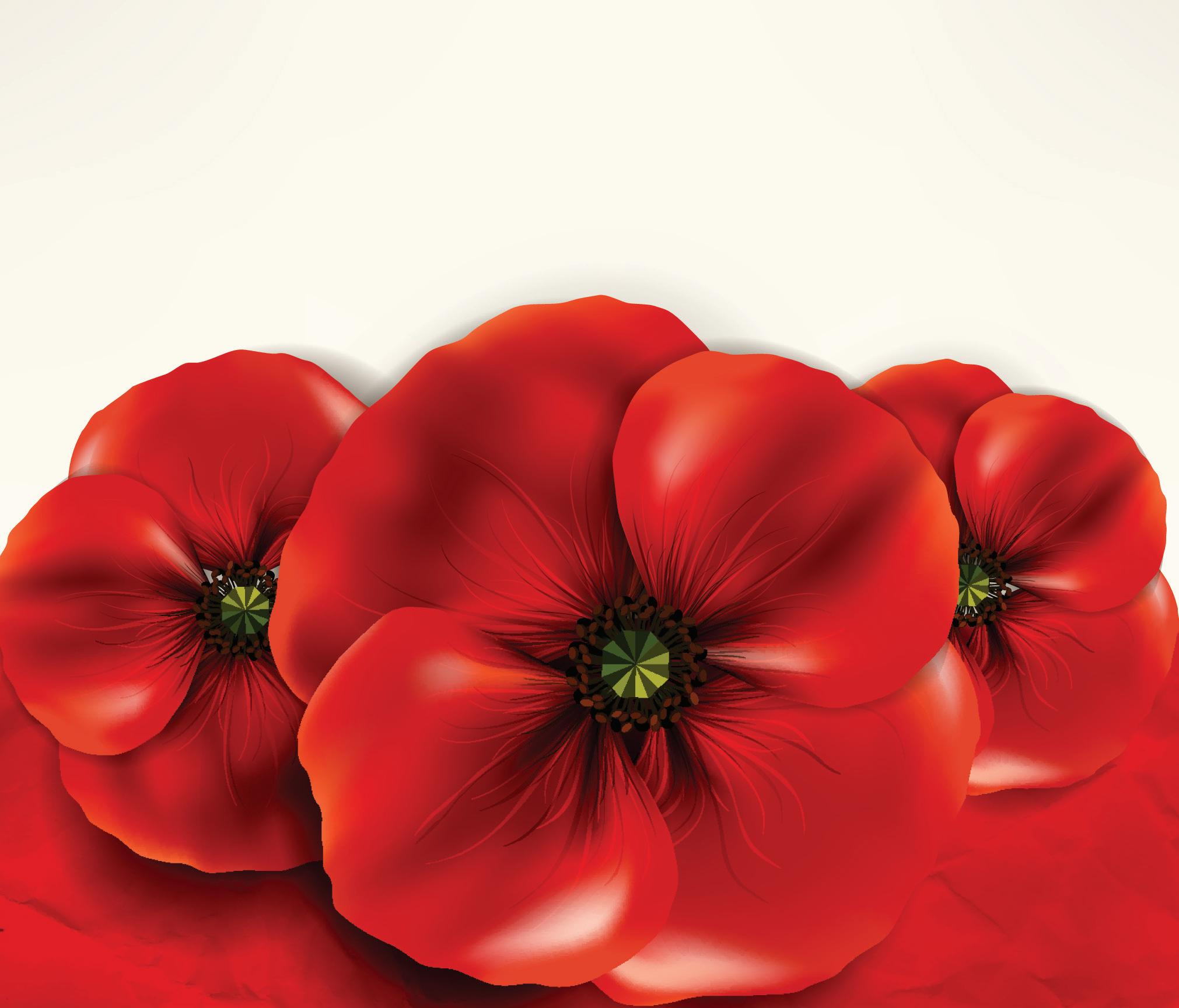
My mother rushed out to find me unharmed and holding a piece of glass. This article was written by Dave Short, and originally appeared in the Senior’s Centre for Excellence’s Heart and Soul newsletter.


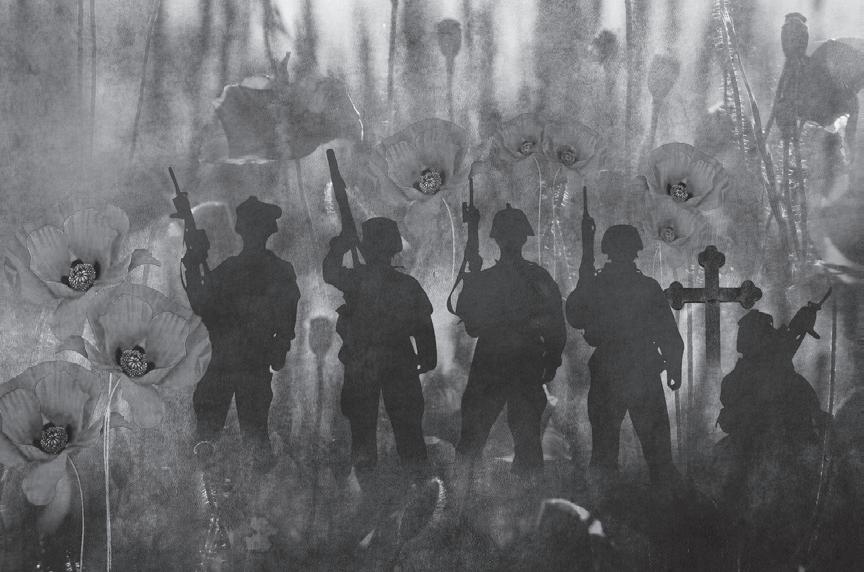


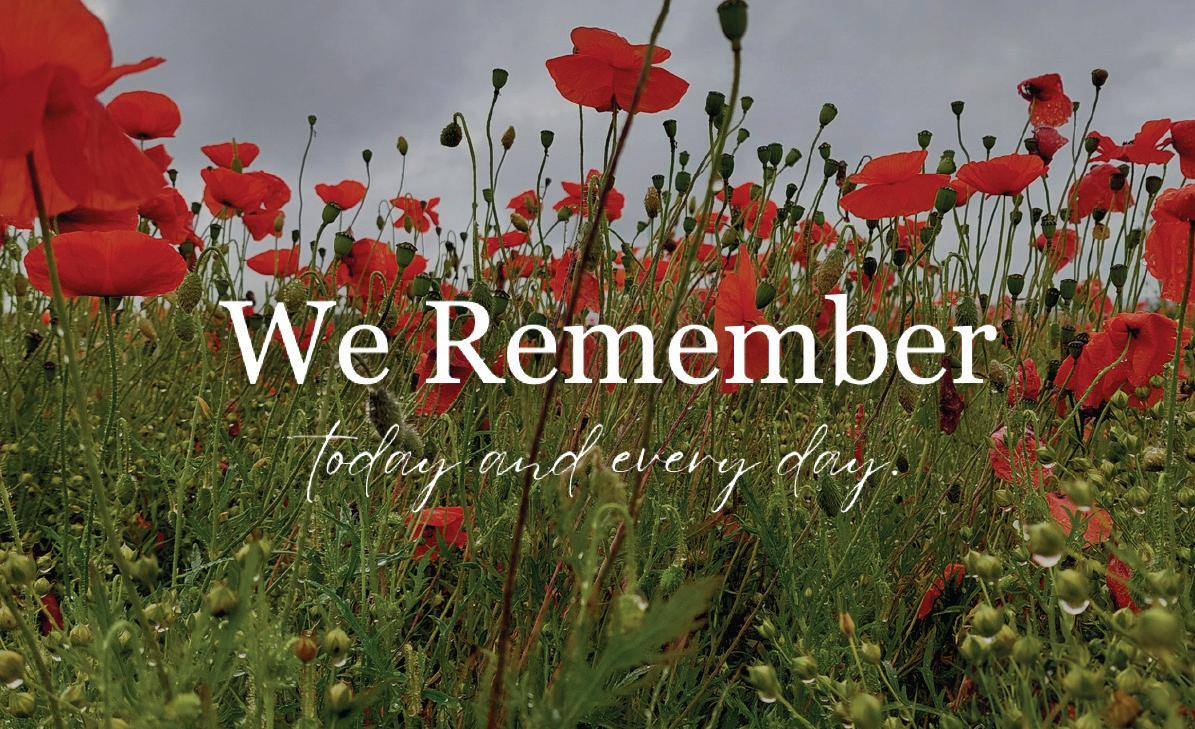



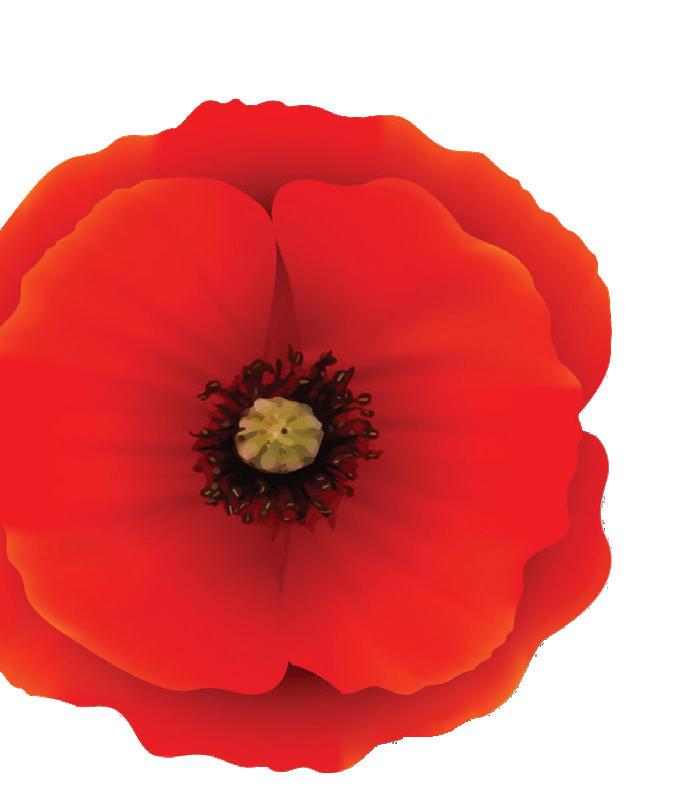




The historical significance behind the Poppy
ELLOUISE THOMPSON REPORTER
CANADA – From late October until Remembrance Day, millions of Canadians dawn the poppy on their lapel.
The bright red flower is a symbol and a promise to never forget those who served and sacrificed for the freedoms we so enjoy today.
While some may think the poppy’s significance originated during the First World War, the history and significance of the poppy can be traced back as far as the 19th century with the Napoleonic wars.
According to the Royal Canadian Legion, Poppies grew over the graves of soldiers of the Napoleonic wars near Flanders, over 110 years before the First World War.
The first person to introduce the poppy to Canada

was Lieutenant-Colonel John McCrae of Guelph.
McCrae served as a Canadian Medical Officer during the First World War and is the author of the famous poem In Flanders Fields
“John McCrae penned the poem In Flanders Fields on a scrap of paper in May 1915, on the day following the death of a fellow solider,” reads the Royal Canadian legion website.
Inspired by McCrae’s poem, Madame Anna Guerin of France, who had originally founded a charity to help rebuild France, created poppies of fabric as a means to raise funds.
Guerin later presented the concept to France’s allies including the precursor to the Royal Canadian Legion (The Great War Veterans Association).
According to the Royal

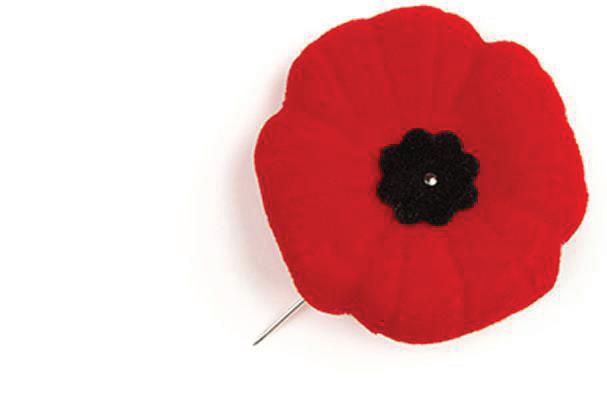
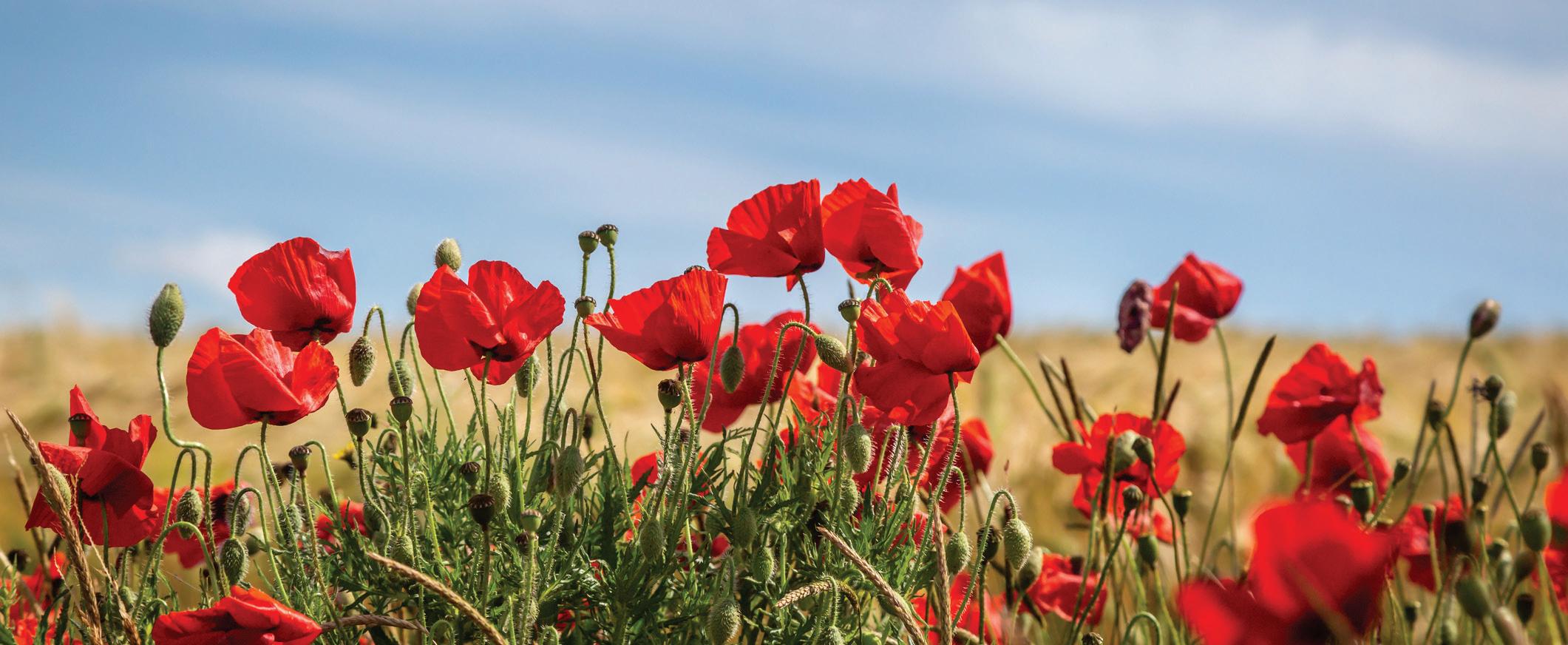

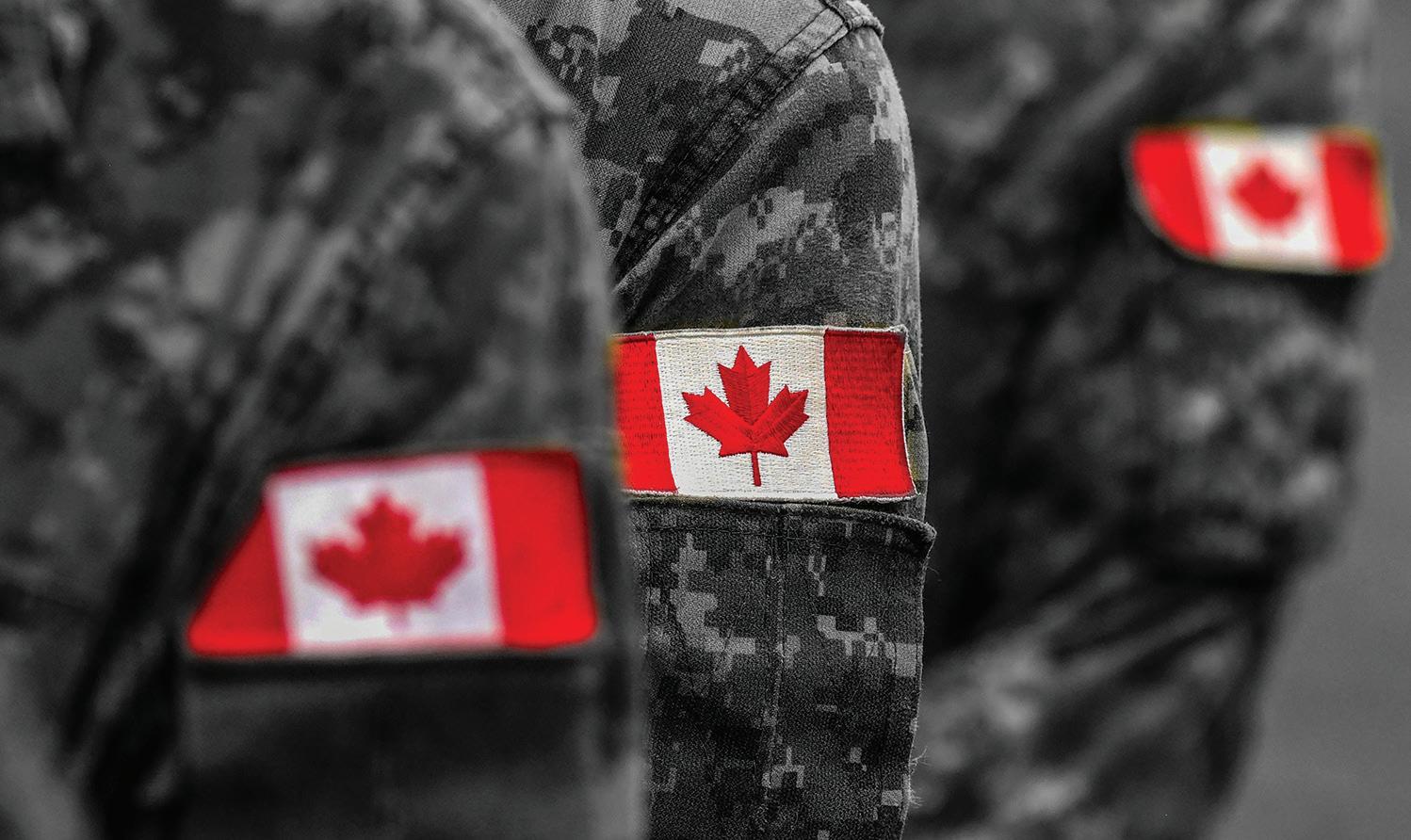
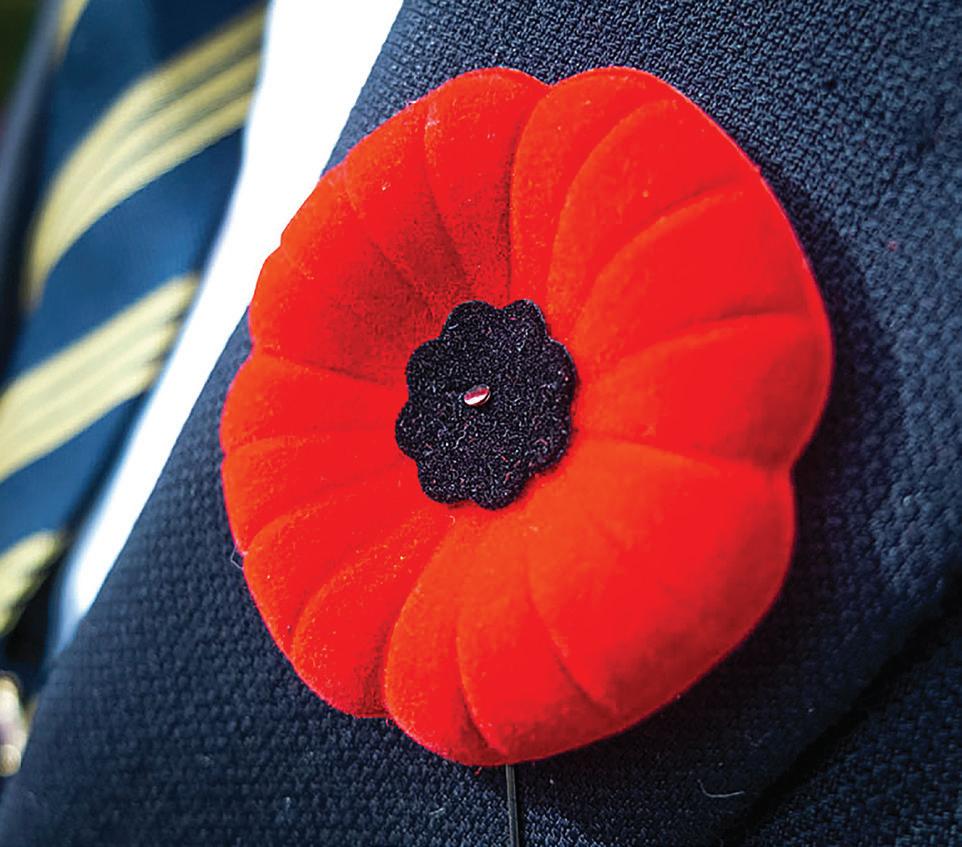
at a
ing in Port Arthur (Thunder Bay) and was officially adopted July 6, 1921.
Today the symbol of the poppy remains strong, and the memories of those lost to battle have remained in our hearts and our minds.
Significance of Remembrance Day symbol dates back hundreds of years.
Lieutenant Honey from Conn awarded Victoria Cross
three systems during the latter part of August and early September. On Sept. 27, the Canadians crossed the Canal du Nord, overran the heavily fortified German positions in Bois de Bourlon. It was during this operation that Honey was awarded the Victoria Cross.


After all of the other officers of his company had become casualties, Honey took command and reorganised his party under fire, continuing the advance and gaining the objective. Honey, finding that his company was suffering casualties from enfilade machine-gun fire, located the machine-gun nest and rushed it single-handed, capturing the guns along with 10 prisoners.
After fighting off four counter-attacks Honey went out alone after dark, located a German post, and took a party to capture it. On Oct. 29, Honey led his company against a strong enemy position. Honey died of wounds received on the last day of the 78th’s attack.
After his death, Honey’s commanding officer wrote
to the young soldiers family saying, “Nowhere have I seen such gallant work as this boy of yours displayed … he was the first to reach the final objective during the first day and throughout the days that followed he was an example of grit and determination that was the talk of the whole command. The men idolized him, and as they bore him by me that morning there was a tenderness in their care that only strong men can show.”
The young solider was buried in the Quéant Communal Cemetery British Extension France. In accordance with his parents’ wishes, there was no investiture of his Victoria Cross. A plaque in Honey’s honour was unveiled by the Archaeological and Historic Sites Board of Ontario beside Westcott United Church, Conn, in 1964. The family presented his medals without fanfare to the Canadian War Museum in 1975.
To read more about Lieutenant Lewis Honey visit biographi.ca/en/bio/honey_ samuel_lewis or veterans.gc.ca





OPINION: Let us always remember those who served
BRENT BLOCH
CONTRIBUTOR
MOUNT FOREST –Remembrance Day is celebrated every fall, but soon after forgotten.
In schools, children are marched into gymnasiums and taught the importance of Remembrance Day. Poems are recited, war histories are chronicled, and dramatic interpretations are witnessed. Crimson poppies are pinned above hearts, and silence is observed.
Then students return to their everyday lives of trigonometry and Shakespeare.
As an educator, traveller, and history enthusiast, I have endeavoured to honour Canada’s fallen soldiers through pilgrimages to sites of the great wars on my own and with my students.
I have walked the trenches of Vimy Ridge and stood in the

Brent Bloch
pouring rain on a frigid day; but I have not done so with muck and grime stuck to my uniform, or with the cavalry charging straight at me with bayonets brandished. I have not stormed machine-gun nests where the rat-a-tat of fired ammunition reverberated in the air. I have not breathed my last breath on the ridge in Vimy with 3,598 of my countrymen.
I have faced the imposing, impenetrable cliffs of Dieppe and imagined the impossibility of scaling them; but I have not done so as hot metal ripped through my comrades beside me.
I was not mowed down like ripe grain when my landing craft boat lowered its ramp to the delight of waiting enemy guns. My dead body was not
washed away by the waves on the beach like some of the 907 Canadian soldiers who died during the raid on Dieppe.
I have celebrated the anniversary of D-Day with Canadian war veterans, eagerly drunk up their stories of war like a thirsty school boy, and admired them as they paraded through the streets of Bayeux.
I spilled tears with these veterans on Juno beach in Normandy; but I did not spill my blood with them 70 years earlier when the smell and fear of death were lingering near. I did not pay for the feeling of the white sand between my toes, unlike the 3rd Canadian Infantry Division, where the battle for the beachhead cost 340 Canadian lives.
Despite my pilgrimages and hunger for history, I have come to realize that I have no idea what it must have been like to claim Vimy Ridge, raid Dieppe, land on D-Day, or literally
stand on guard for my country. I have never looked death in the eye, starved, suffered torture, or felt true fear — and for that I am thankful.
Just as the maple leaves sacrifice their existence each autumn so that the tree has a better chance at survival in the winter, so too did Canada’s soldiers give up their lives for us so that we might have a better chance to weather the storms of discrimination, tyranny, and hatred that periodically batter our world.

Let us not only remember our past when the blood-red poppies appear momentarily between Halloween pumpkins and Christmas cards.
Let us also remember the sacrifices of our fallen Canadians every time we see a maple leaf fly.
***
Poppy donations fund trained service dogs to support veterans
OTTAWA – Recently local veteran Cpl. Steven McCulloch was paired up with Jellybean, a National Service Dog, specially trained to support veterans.
It’s just one of many initiatives people support when they donate to the Royal Canadian Legion’s Poppy Fund.
“The Legion directs funding from the Poppy Campaign for this purpose, and so it is hoped that the citizens of Wellington County will again show their generosity during this November’s campaign,” Malcolm McCulloch, a RCL Dominion Command outreach initiative volunteer and Fergus Legion member, said in an email to the Community News
Malcolm, who happens to be Steven’s father, was hoping to raise awareness of this Poppy Campaign-funded initiative.
The Legion’s Dominion Command has partnered with Wounded Warriors Canada, and donated poppy funds for the acquisition and training of service dogs for veterans with service-related injuries, he explained.
“It typically costs up to $30,000 to acquire and train
suitable dogs,” Malcolm said.
The dogs all have different personalities and varying attributes and skill levels, and they are matched to the specific needs of the receiving veteran, he explained.
“A veteran’s needs can be quite complex and range from mobility challenges to PTSD (post traumatic stress disorder),” he said.
They can be trained to do unique things, like recognize and wake a veteran when he’s having a nightmare, he said.
The animals are non-judgmental and provide good company.
It’s possible that any type of dog might be able to do the work, if it’s got the right temperament, but it’s important that the dog’s be certified.
Meet Jellybean
That way, they can “accompany the veteran wherever he goes and provide continuous support,” said Malcolm.
“It could take a veteran over a year to acquire a service dog and the need is great,” he

said, reiterating his hope that people will “be generous with your donations to the Royal Canadian Legion Poppy Fund.”
For more information, visit www.nsd.on.ca or www.legion.
ca.
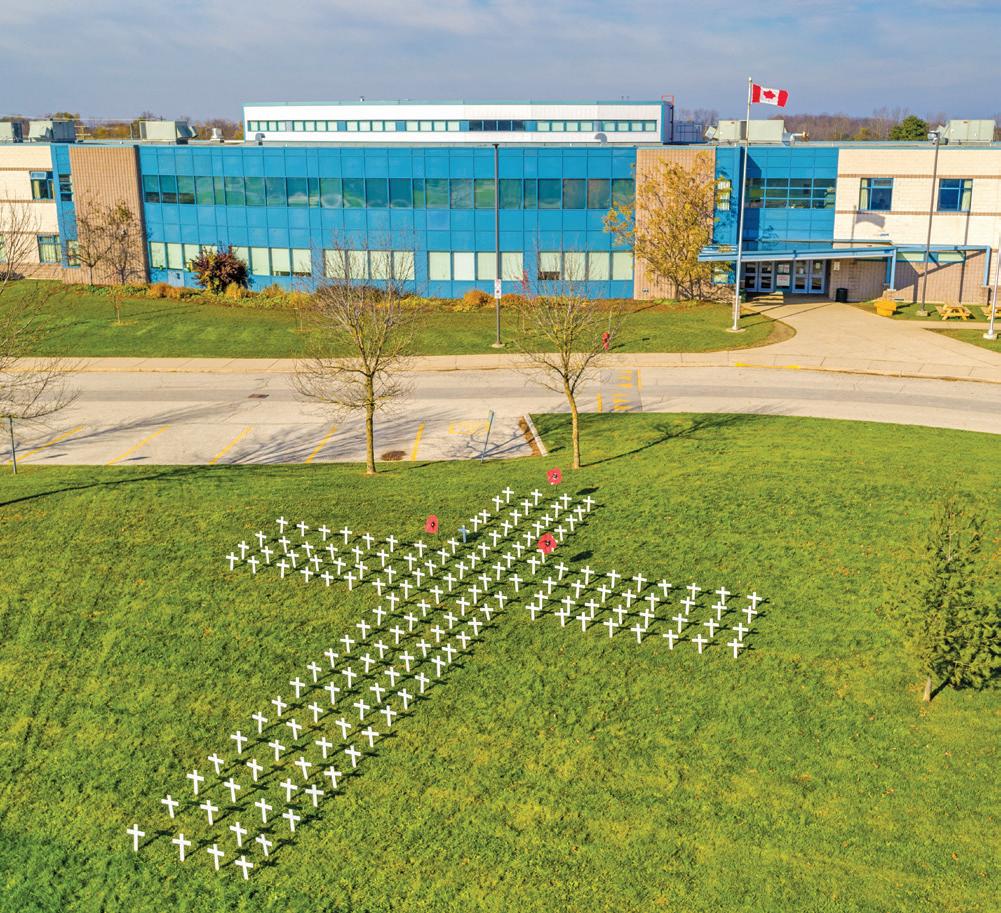
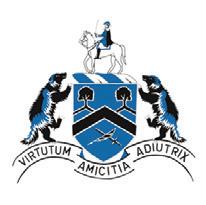
Cpl. Steven McCulloch, left, of the Royal Canadian Dragoons poses with newly acquired national service dog Jellybean and RCL Dominion Command outreach initiative volunteer Malcolm McCulloch of the Royal Airforce Air Training Corps, also his father.
Submitted photo
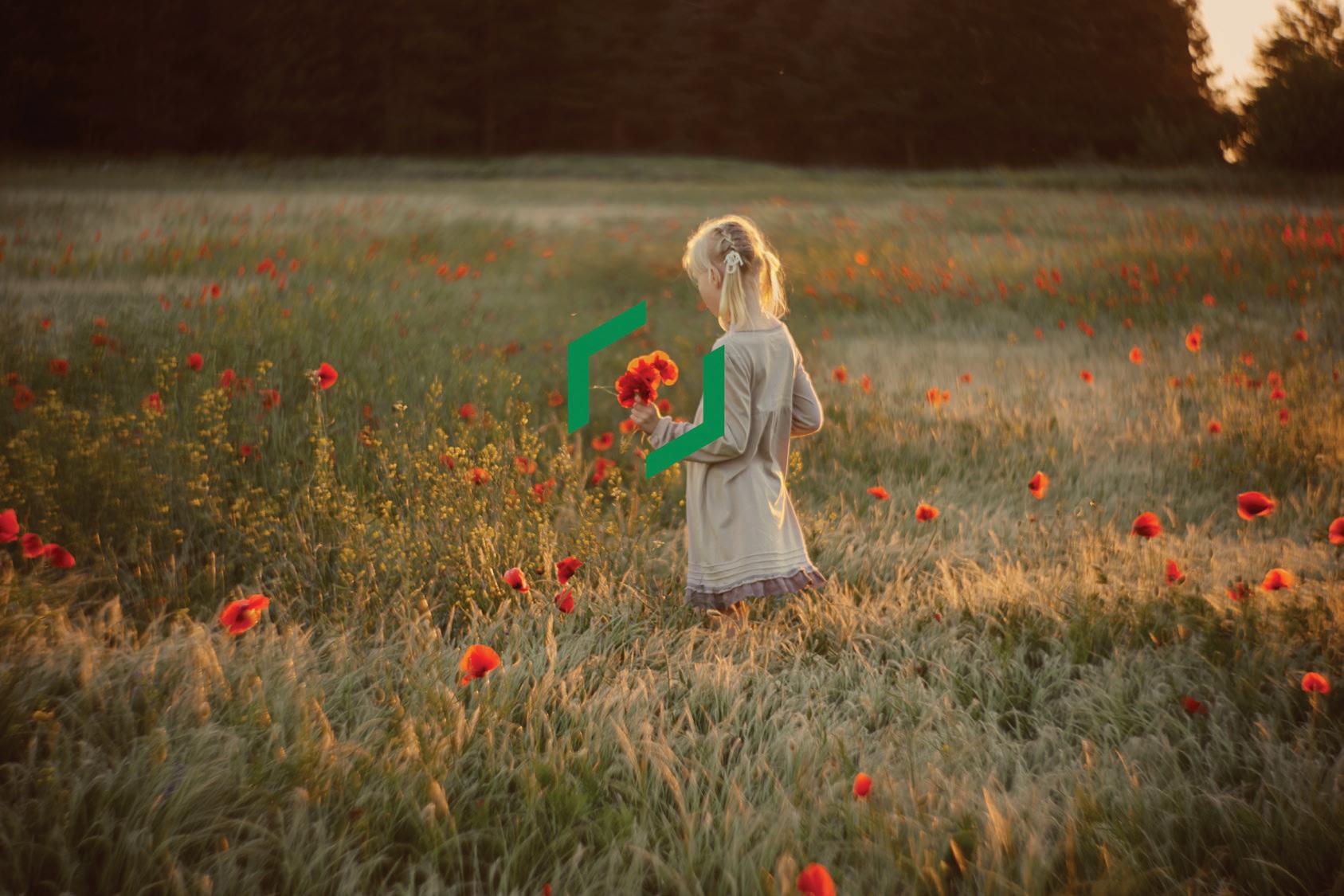
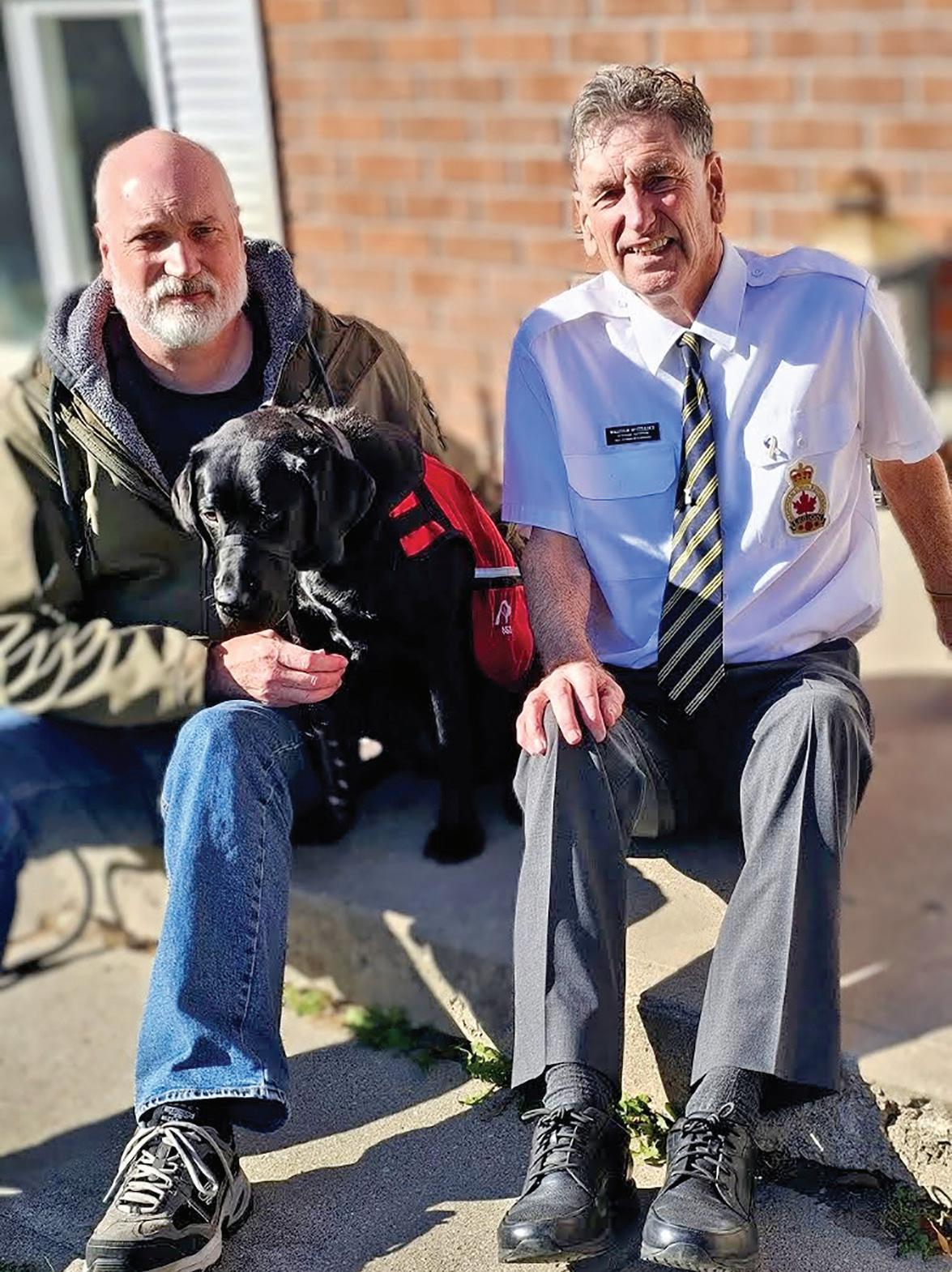
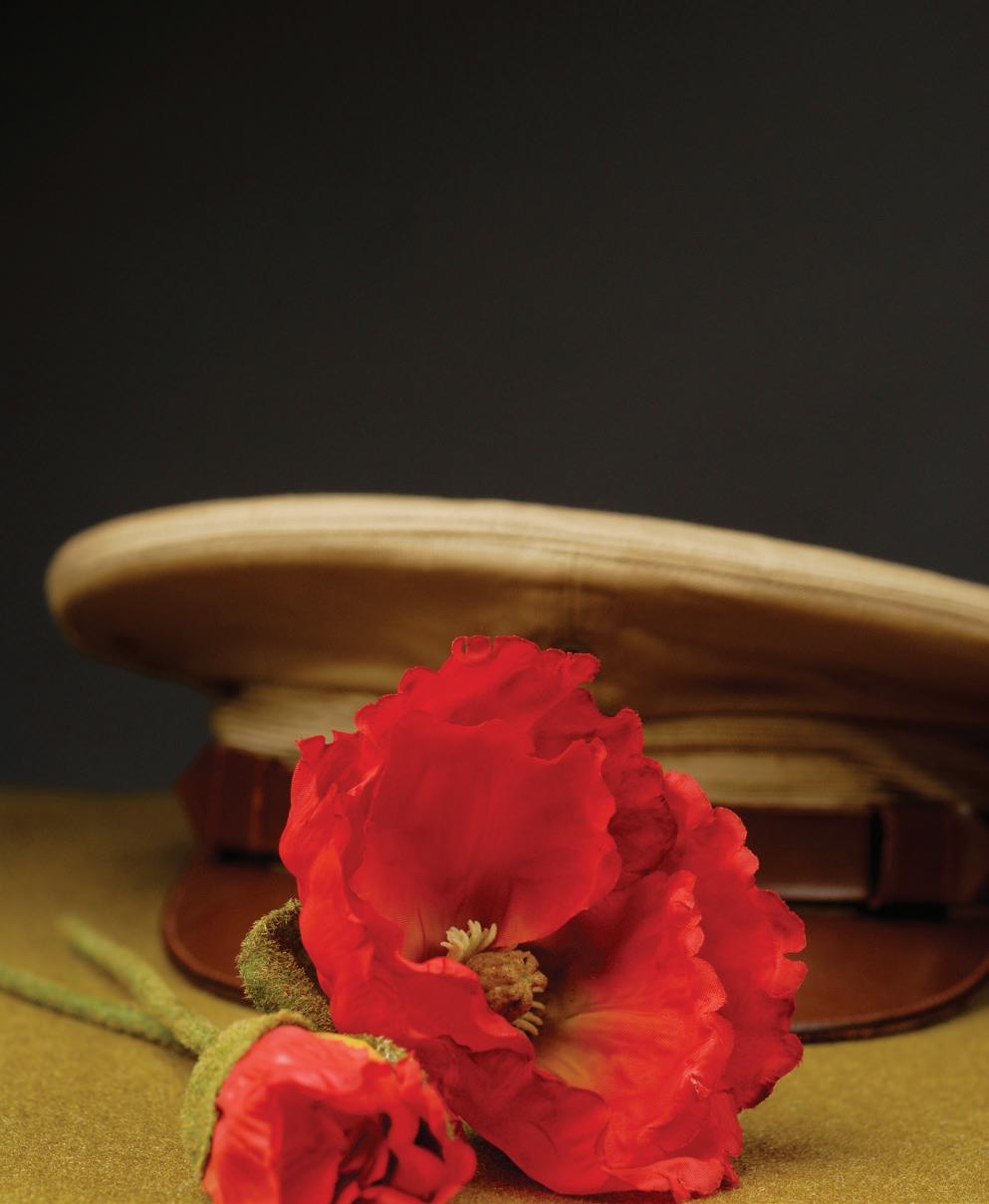
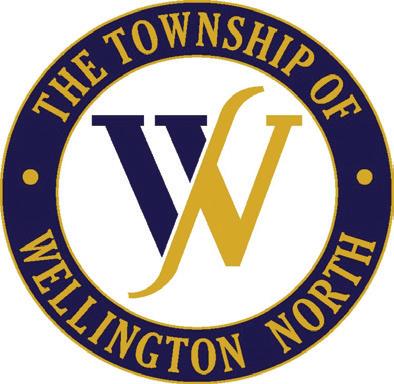















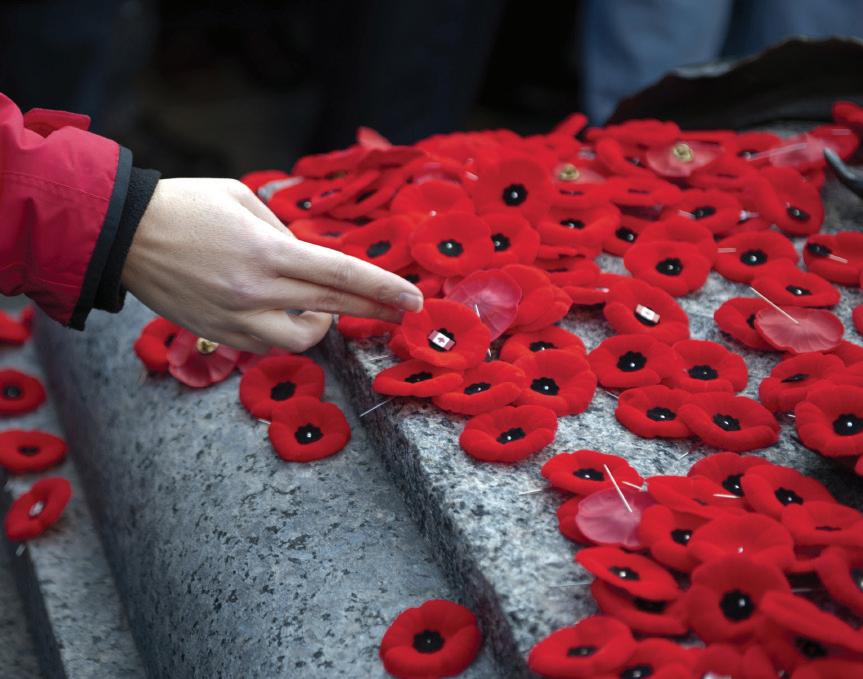



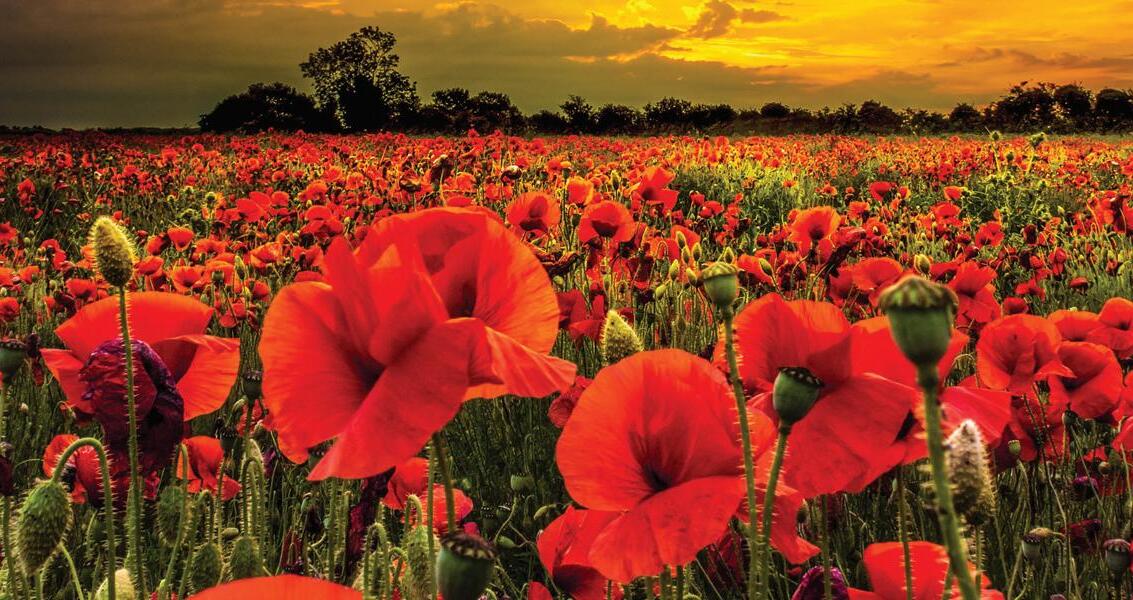




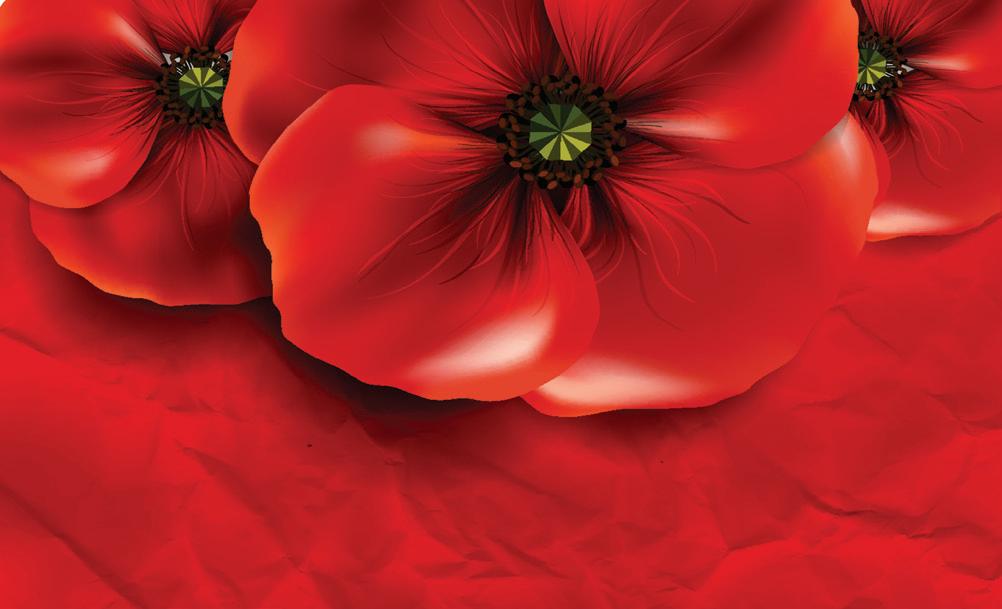
ROBIN GEORGE REPORTER
WELLINGTON COUNTY
– Many people from across Wellington County have died while serving in the Canadian Military.
Each of them left lives and loved ones behind, and though information about some is lim ited, each had a story to tell.
The following informa tion about fallen soldiers from Wellington County was complied from information gathered from Veteran Affairs Canada’s Canadian Virtual War Memorial (CVWM), unless otherwise stated.
Laurence Harrison

Private Lawrence Tolmie Harrison lived in Fergus before enlisting with the 153rd Battalion in March, 1916, at just 16 years old.
He later served with the Canadian Infantry (Western Ontario Regiment), 18th Battalion.
His parents were Mr. and Mrs. H. L. Harrison, from Acton.

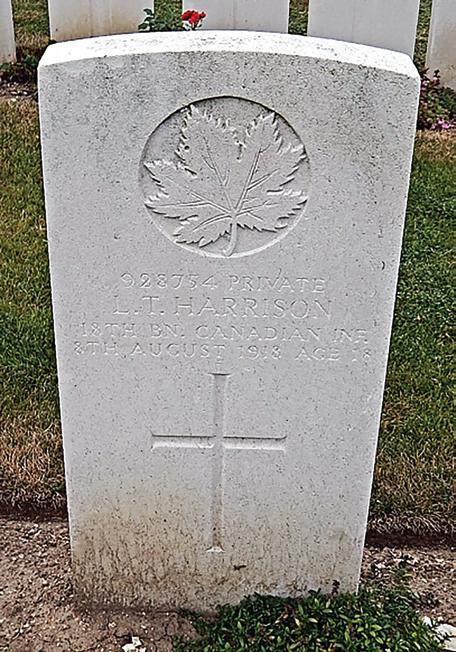
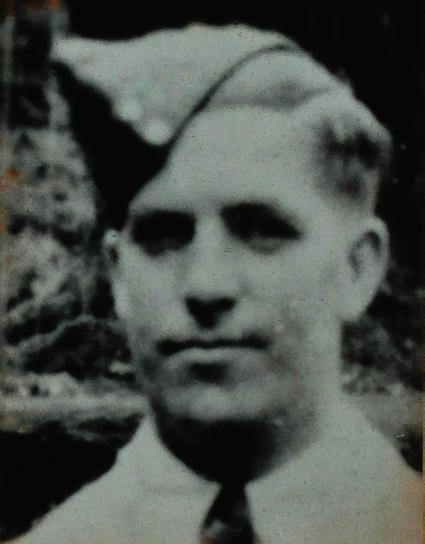
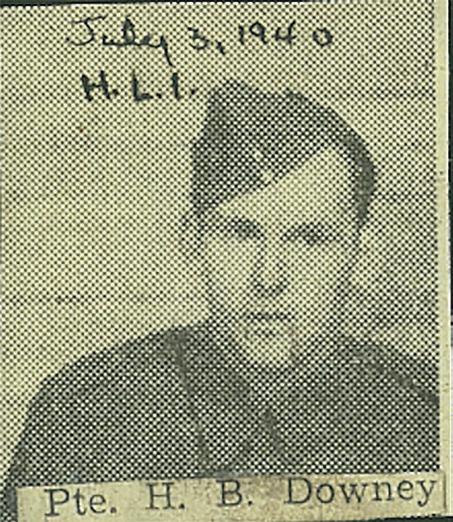
Aubrey Woodham
Master Corporal Aubrey Allen Woodham, from Moorefield, enlisted in the RCAF as a steward in 1964.
His parents were Aubrey and Hilda Woodham.
He had three children, Alan, Leeanne, and Carol with his wife Carolyn Constance Agnes (nee Safriuk) Woodham.
They married on May 18, 1968 at the Canadian Forces base portage La Prairie, in Manitoba.
Woodham remustered to traffic technician in 1973.


Light Infantry of Canada, RCIC. Downey died on Dec. 6, 1943, at 37 years old.
He is buried in the Drayton (Victoria) Cemetery (lot 26, range L, grave 1).
Vincent Hanson
Sapper Vincent James Hanson was the son of Annie Jamieson (formerly Hanson), of Kenilworth, and John Hanson.
Hanson served in the Canadian Engineers and died on Dec. 19, 1919, at 22 years old.

Harrison died on Aug. 8, 1918, at 18 years old.
According to the Toronto Star, he was “later honoured by being made a Sergeant on the field.”
Jack Stafford
Private John “Jack” George Stafford lived in Elora before serving in the Midland Regimant, RCIC, during the Second World War.
He was married to Mary Georgina Stafford of Orton and his parents were John and Annie Stafford.
Stafford died on Feb, 9, 1943, at 23 years old.
He is buried in the Elora Cemetery (lot 44, section B, grave 1).

He was flying in a Canadian Forces Hercules plane on Oct. 15, 1980, as part of a search for a civilian helicopter “that had vanished in the wilderness about 300 miles north of Montreal,” according to the Toronto Star.
Eight crewmen died in the crash. There were two survivors.
Woodham was 33 years old.
Harold Downey
Private Harold Bertram Downey was the son of David A. Downey and Ethel W. Downey of Drayton,
He was married to Evelyn Downey, also of Drayton.
He served in the Highland
He is buried in the Arthur (St. John’s) Cemetery (lot 16).
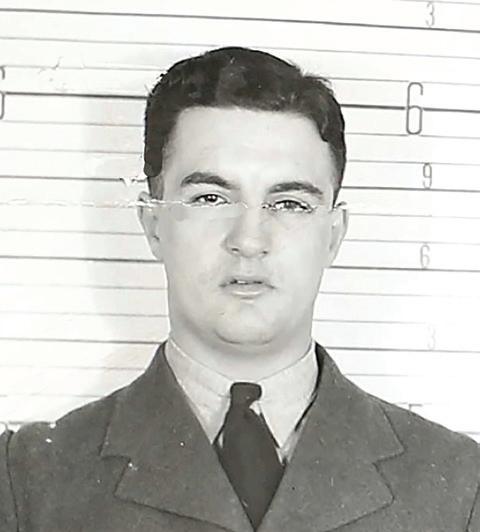
in Toronto, where he died more than six months later, on March 20, 1945, as a direct result of his wounds.
Bracey was 25 years old.
He is buried in the Mount Forest (Holy Cross) Cemetery.
Hugh Wilford
Private Hugh Denzil Wilford “lived in Palmerston practically all of his life,” according to a clipping from the Toronto Star
He was the son of councillor Neil Wilford and Isabella Matilda Wilford, and worked as a locomotive foreman at the


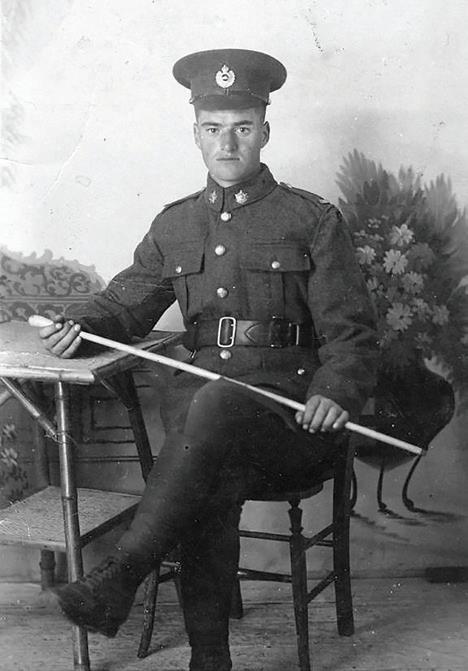
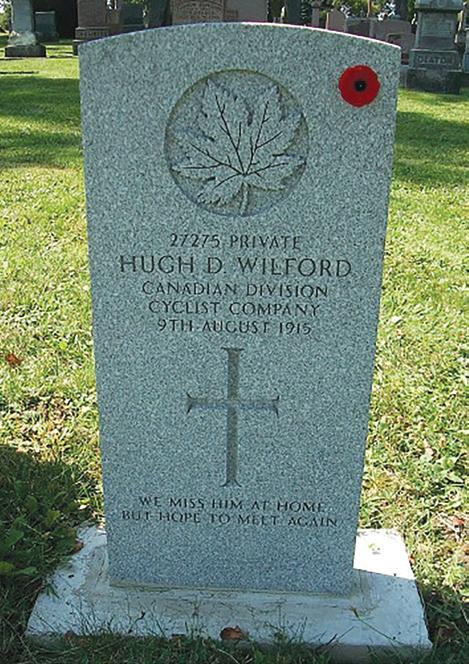
Thomas Bracey

Leading Aircraftman
Thomas Stafford Benedict
Bracey was the son of Dr. John F. Bracey and Mary Bracey of Mount Forest.
He was born on Dec. 12, 1919 and had green eyes and black hair.
He was brother to John F. Bracey, who lived until 1986.
Bracey was in the Royal Canadian Air Force, and suffered multiple gunshot wounds in Belgium on Sept. 9, 1944.
He was evacuated to the Royal Air Forces Hospital Northallerton, and then repatriated to the Christine St. Hospital
“On the outbreak of the war, [Wilford] immediately decided to go to the front,” states a clipping from the London Free Press
He married Anna Smith days before leaving for Valcartier training camp.
Wilford enlisted with the Grey’s Horse in Brantford and was transferred to the 48th Highlanders, and then later to the Divisional Cyclist Corps. Wilford received a gun-




OPINION: Bergen op Zoom remembers sacrifices of Canadians
BILL HARCOURT
NETHERLANDS – Bergen op Zoom is a small city in the Netherlands, about 150km south of Amsterdam.
The history
The city was occupied by German forces during the Second World War and life was miserable. When the Allies stormed the beaches in Normandy on D-Day (June 6, 1944), it set in motion the liberation of Europe and its citizens.
For the next four-plus months, Allied troops slowly made their way north, with Canadians primarily heading to the Netherlands.
In the days leading up to Oct. 27, 1944, the South Alberta Regiment and the Lincoln and Welland Regiments, both with the First Canadian Army, found themselves close to Bergen op Zoom.
They were sure the Germans had retreated, but were leery about advancing after two days of heavy fighting.
The two Commanders were discussing what they should do next, when Lieutenant Colonel Wotherspoon of the South Alberta Regiment said, “Hell Bill, let’s take this damned place.”
A 16-year-old Kees de Waal of the Dutch Resistance said he would lead them in. They hoisted him onto the lead tank and they entered the city to a hero’s welcome.
Residents of Bergen op Zoom now celebrate their liberation on Oct. 27 every year.
This year marks the 80th anniversary of Bergen op Zoom’s liberation.
My uncle, William Reginald Harcourt was one of the many Canadian soldiers to die in the fighting two days earlier, and he is buried in the Bergen op Zoom Canadian War Cemetery, just outside the city.
He was a machinist working for the Canadian Pacific Railway before enlisting in July 1942.
He lived on Jane Street in West Toronto and attended Humbercrest School. Two of his brothers enlisted also; one was a shoemaker before infantry training, and my dad served with the First Canadian Engineers, mainly in Belgium.
William Reginald Harcourt left behind his mother, another brother and three sisters (his late father was a veteran of the 95th Battalion in the First World War).
He was 24 when he was killed.
Wellington heroes
On Oct. 25 we went to the cemetery, 80 years to the day
We found out about them due to the incredible tribute annually displayed on the lawn of the Wellington County Museum and Archives in Aboyne.
Each year leading up to Remembrance Day, museum officials put out a memorial marker for every Wellington County soldier that has been killed in war.
Sadly, there are more than 550 of them. It is quite moving, especially when they light a candle at each marker and leave it lit until after Remembrance Day.
Below are some details about five heroes whose graves we visited.
Private Clarence Albert Shaw of the Royal Regiment of Canada was survived by his parents Harold Walter Shaw and Dora Lavinia of Kenilworth. He left his job as a labourer to serve his country and was killed on Oct. 28, 1944 at the age of 23.
Lieutenant John Trelawney Scudamore of Mount Forest was with the British Columbia Regiment when he was killed on Oct. 29, 1944. He was in charge of a tank crew that suffered hits in a huge day-long battle. He was 21 years old.
Nicknamed “Scud,” he was survived by his parents, Reverend Harold Burt Scudamore and May Trelawney Scudamore.
Gunner Edward James Patterson, also from Mount Forest, was with the Royal Canadian Artillery, 19 field regiment, and was 21 when killed on Nov. 7, 1944. He was survived by his parents Harold Dufferin Patterson and Sarah Patterson of Guelph.
Lieutenant Austin Michael Heffernan of The Royal Canadian Corps of Signals, was 25 when killed by a roadside bomb on June 6, 1945. He was the son of Charles and Margaret Heffernan of Arthur.
Private Ernest Cornelius Gibbs of Fergus enlisted in October 1943 and went overseas in August 1944. He was with the Argyll and Southern Highlanders of Canada, and was 20 years old when killed on Oct. 29, 1944. He was survived by his wife, Harriet Jane Gibbs, his parents Ernest and Beatrice Gibbs of Long Branch, and a brother William and sister Viola Cole, both of Toronto.
‘Never forget’
The street where the Canadians first gathered before entering the city, has been renamed to Canadalaan or “Canada Lane.”
Saturday morning on Oct. 26 there was a very touching service to dedicate a park on Canadalaan, renaming it South
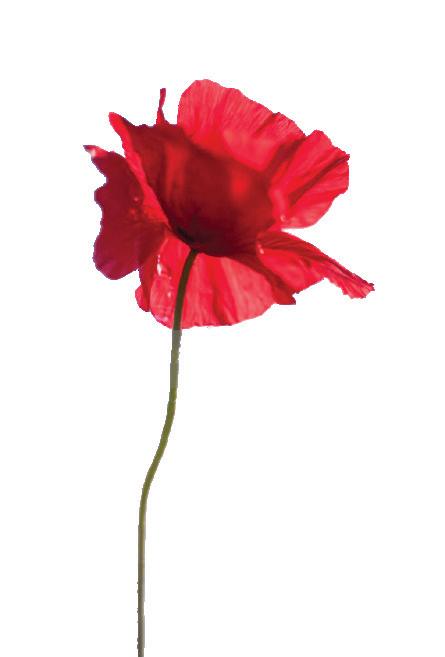

the town.
The Canadians quickly put up a Bailey Bridge, and when a permanent bridge was finally built, it was renamed the Lincoln Bridge, after the Lincoln and Welland Regiment.
Saturday evening there was a Taptoe, or Tattoo, with the Lincoln and Welland Band and seven other marching bands.
They were all great and very entertaining. After the bands finished, the pubs were overflowing onto the square. It was a real street party and dance.

Sunday was the 27th, and a very sombre and moving service was held in the cemetery.
Hundreds of people attended; most rode their bicycles out from town. The Lincoln and Welland Band played the anthems of Canada and the Netherlands.
Ambassadors from a dozen countries attended and laid wreaths. Princess Margriet of the Netherlands also attended, and also laid a wreath.
The Canadian Ambassador gave a moving speech, thanking the Dutch for remembering the sacrifice of Canadians, and for their commitment to ensuring that it will never be forgotten.
The only Canadian Legion branch in the Netherlands is located in Bergen op Zoom, Branch 005. Its members served as the honour guard at the service, and also paraded the Canadian Remembrance Torch, a flame kept burning for everyone to remember the events of 1944.
Bergen op Zoom will never forget the sacrifices of Canadians, and I’ll never forget the events of this amazing week.
Bill Harcourt is a resident of Alma who travelled to the Netherlands and was in the city of Bergen op Zoom from Oct. 24 to 28.
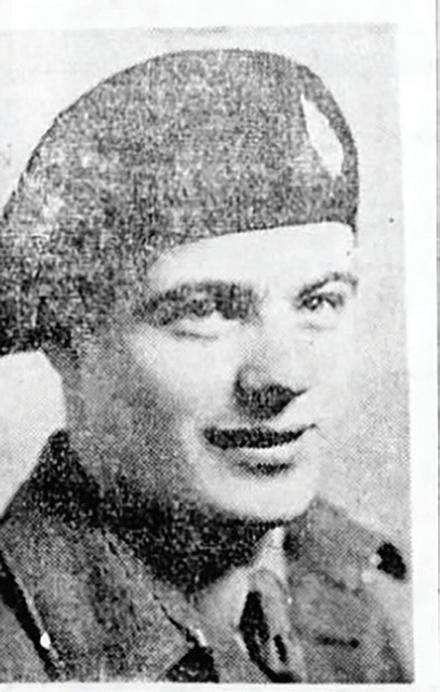
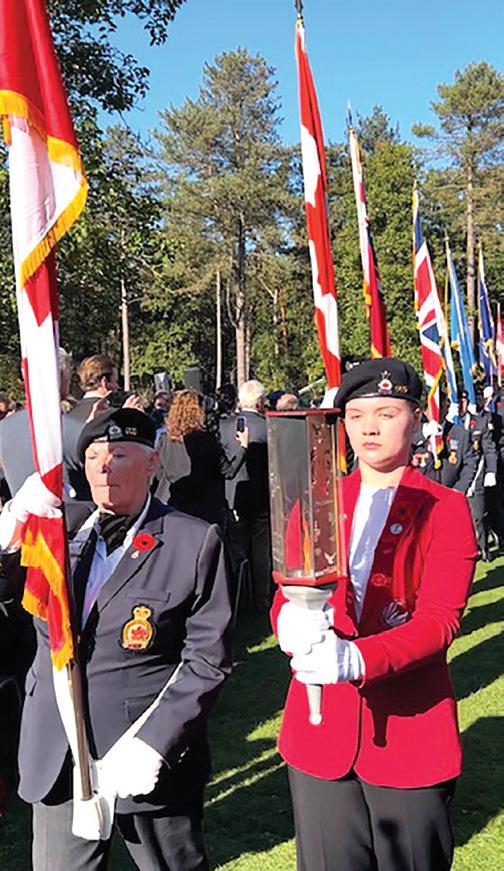
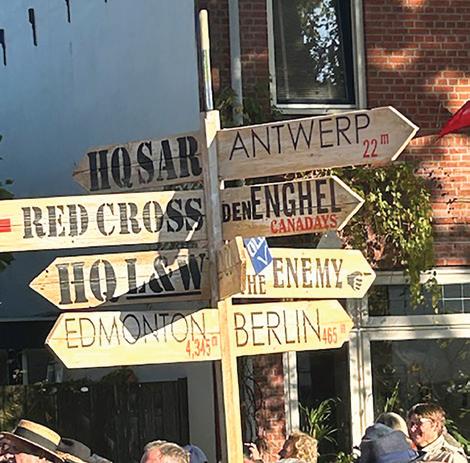
MIDDLE: Legion member carrying the Canadian Remembrance Flame.
ABOVE: Sign on Canada Lane in Bergen Op Zoom.
Submitted photo
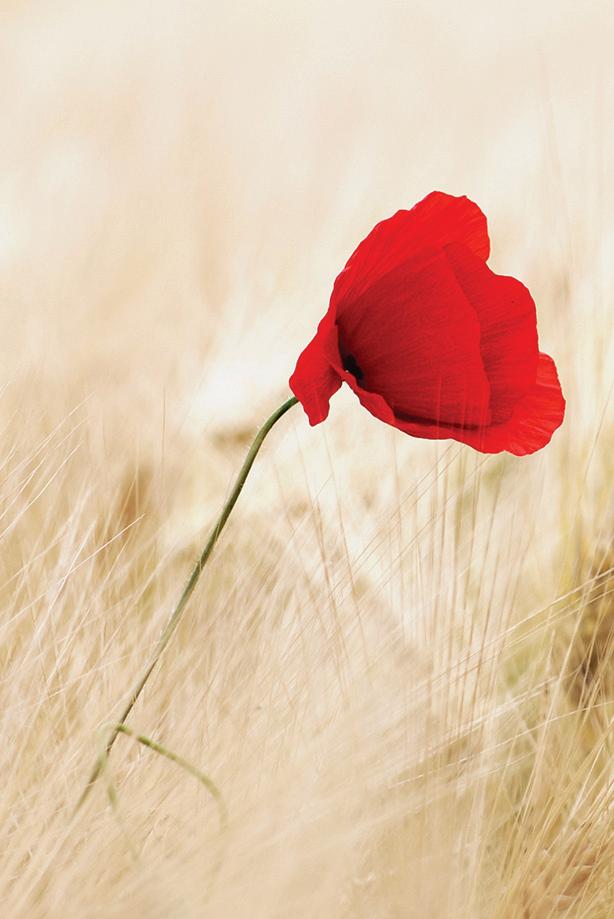
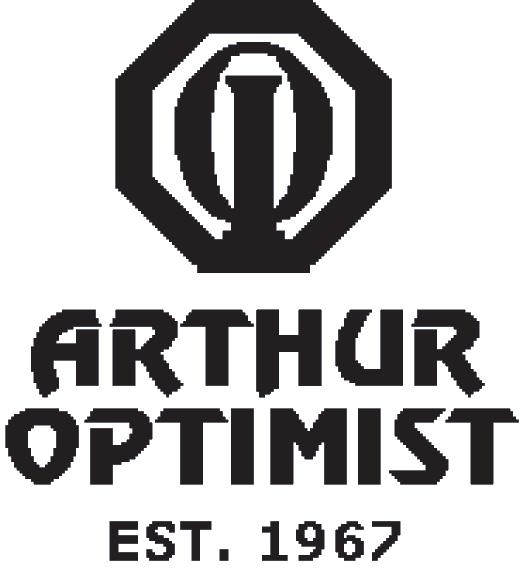

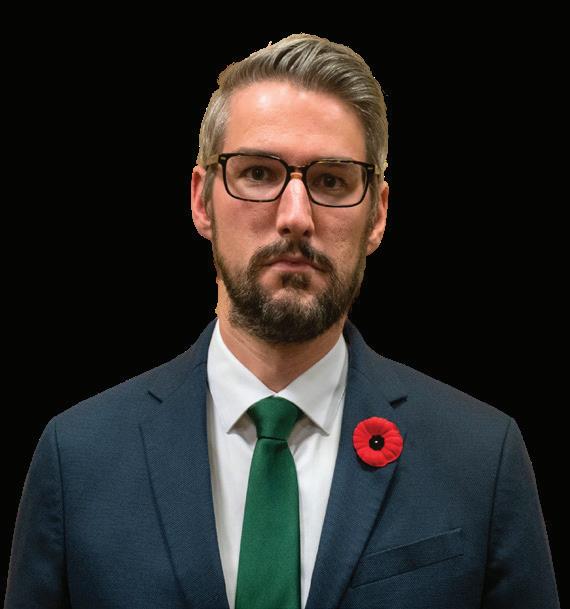

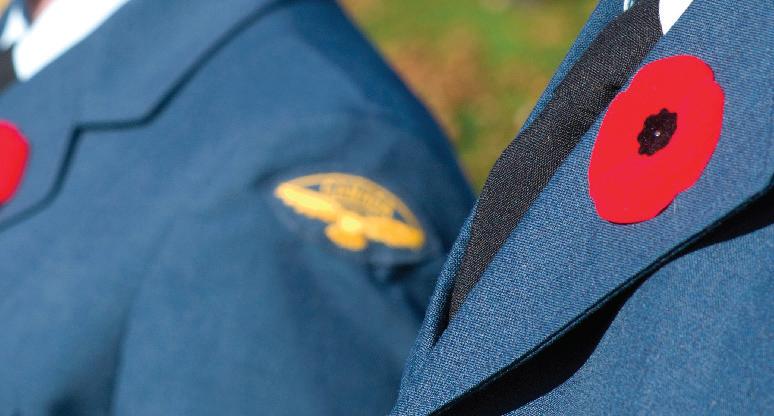












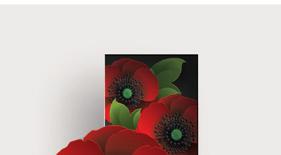

Church Palmerston invited to attend a Service of Remembrance led by our Minister, the Chaplin of RHFC. The service will be on Nov. 10 @ 10am.





























WELLINGTON COUNTY
– Legions across the county will be honouring war veterans on and around Remembrance Day.

Here’s where you can find the services: Minto















Remembrance Day Services











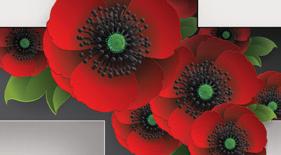


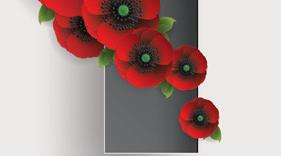





Agenda for Remembrance Day
Clifford Cenotaph Service Sunday November 10, 2:00 pm
Harriston Cenotaph Service November 11, 11:00 am with parade lineup beginning at 10:30 am at the branch.
Lest We Forget
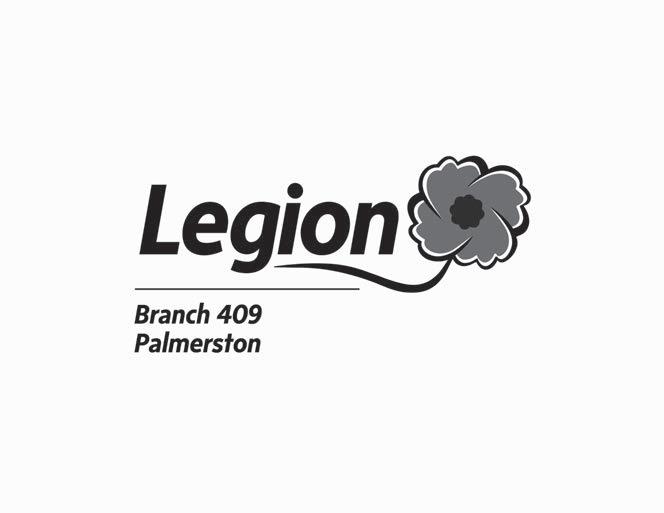
The residents of Minto will have their pick of Remembrance Day ceremonies as Clifford, Palmerston and Harriston will be honouring Canadian veterans.
In Clifford on Nov. 10 at 2pm, a ceremony will be held at the cenotaph by the Harriston Legion Branch 296, for those who want to remember those who have fallen. The cenotaph is located at 8 Clarke Street North in Clifford.
The Harriston Legion will also be holding a ceremony on Nov. 11 at 11am at the Harriston cenotaph on Elora Street.
Those residing in Palmerston can visit the cenotaph located next to the Wellington County Library Palmerston Branch, to remember and thank veterans.
On Nov. 11 the Palmerston Legion will be leaving the legion at 10:30 with a parade marching to the cenotaph.
Once the ceremony is done the parade will walk back to the legion for a late lunch around noon.
That same day the legion will be hosting a Remembrance Day supper at 6pm.
Tickets can be purchased at the Palmerston Legion.
The Palmerston Knox Presbyterian Church will be

holding a service of remembrance led by the church’s minister on Nov. 10 at 10am.
The church is located at 315 Main Street West.
Wellington North
Members of the Mount Forest Legion have two services planned to mark Remembrance Day although, one happens the day before.
The Legion will hold a service on Nov. 10 at 2pm at the cenotaph in Holstein, in Southgate Township.
The main service will take place on Nov. 11 in Mount Forest, with a parade starting at 10:40am, making its way from Parkside Drive along Highway 6 to the Cenotaph.
Legion members, local dignitaries, and current military service members from Camp Borden are expected to take part.
Highway 6 is expected to be closed between 10:40 and 11:30am for the event.
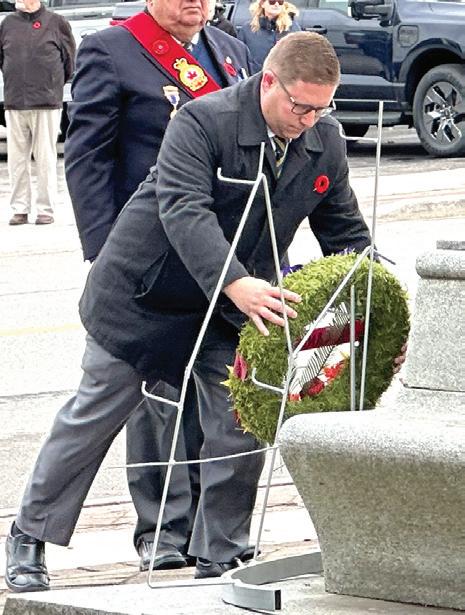
Remembrance Day
CLOCKWISE FROM TOP LEFT:
Mount Forest service, 2023. Harriston service, 2023
Drayton service, 2023
Community News file photos
Arthur
The Arthur Legion will honour those who have served in Canada’s military with a service at the local cenotaph at 11am.
A parade including Legion members, cadets, emergency services personnel and local dignitaries will precede the service, with the parade forming at the Legion at 10:40am
The Legion will host its Remembrance dinner the weekend prior to

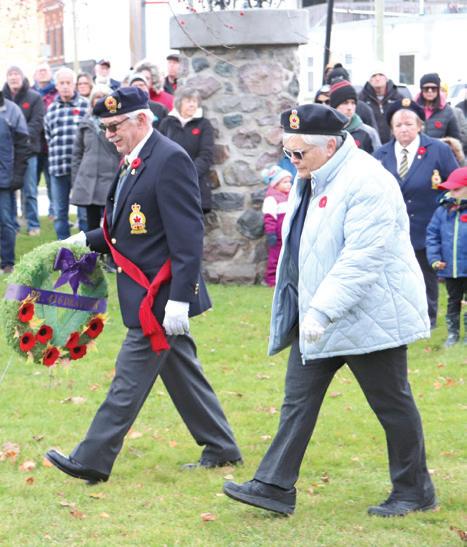
Remembrance Day, on Nov. 9 at 7pm in the upstairs hall of the Arthur Legion. People must reserve tickets in advance by calling 519-8482622.
Drayton
The Drayton Royal Canadian Legion, Branch 416, will be holiding a Remembrance Day ceremony at the Drayton Memorial Park and Cenotaph (45 Wellington St. N.).
At 2pm on Nov. 11, a parade will make its way from the Legion to the Cenotaph.
The ceremony is set to begin at 2:15pm, followed by refreshments at the Legion.
Historical society hosts Veteran Cemetery Walk
Street in Harriston.
GEORGIA YORK REPORTER
HARRISTON – The Harriston Historical Society will be commemorating war veterans in a new way this year.
“To my knowledge this is one of the first tours of its kind at least in recent years; we’re hoping it’ll be successful and we can have more,” said histor-
ical society executive Madison Dicks.
On Nov. 9 at the Harriston Cemetery the society will be hosting a Veteran Cemetery Walk for all to join.
The walk is a guided historical tour to learn about individuals from Harriston who bravely served the country.
For those interested the cemetery is located at Jessie
“We wanted to create an event that would feature local history and more specifically the history of Harriston’s veterans and their lives and families,” added Dicks.
The tour is set to be around an hour from 1-2pm.
Afterwards Dicks is hoping participants will be interested in going back to the society’s
museum room at the Harriston Public Library.
“We have more information on other veterans that we may not have gotten too and refresh-ments with opportunity to chat,” she noted.
A member of the society will be showcasing his collection of Canadian Military memorabilia and other artifacts in the museum.
